c.930 Penrith Viking Hoard buried, artefacts from which were later found in 1785, 1830 and 2009. This is now known as the 'Penrith Hoard'.
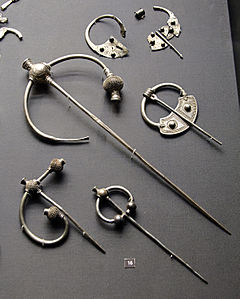

If you cannot see the full index shown on the left edge of your screen, please go to my main page at

I live in
Penrith town, in the
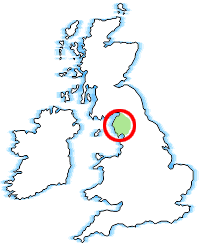
The present day Cumbria, in England, is depicted in green on the map above. However this area has been called by various names throughout the ages, some of which can be confusing in a modern context having been historically referred to as 'The Old North', 'Rheged', 'Cumbria', 'Strathclyde', 'Northumbria', 'Cumbra-land' & 'Cumberland'. In particular the modern day boundaries of Strathclyde and Northumbria have changed over time.
My primary interest lies with Penrith (modern name) and its history, the following historical data is my attempt to understand and record local Penrith history and contains some legendary characters, who have basis in fact.
c.800 BC The Celts from Central Europe occupied most of Great Britain and Ireland, taking over lands from the original Ancient Britons.

79
AD The Cumbria area was invaded
and settled by the armies of the
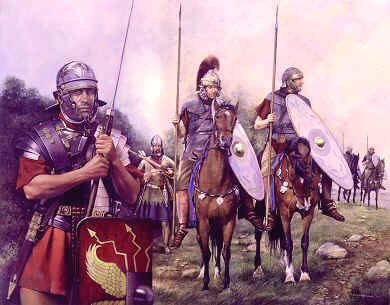
122 AD The World Heritage site of Hadrian's Wall, which is about 30 miles to the North of Penrith and runs from the West to the East coast across England (a distance of 80 miles), was ordered to be built by the Roman Emperor Hadrian as a major line of defence against the Picts to the North. It took 8 years to build being completed around 130 AD and is built of stone. Along the wall are forts, towers, defensive ditches and a road.
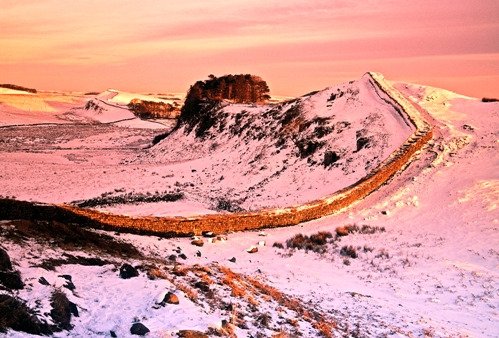
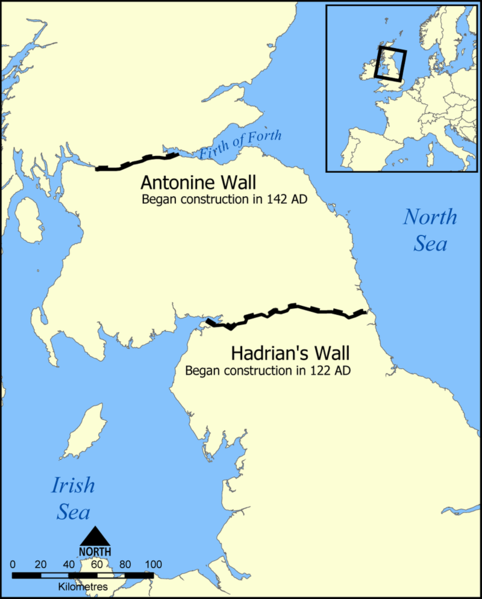
142 AD the Romans began to build the more Northerly Antonine Wall, made from a stone base with turf ramparts, which took 12 years to complete. The land to the North of this wall was Pictland and despite several Roman excursions over the border was never captured from the Picts. This wall marked the Northern most boundary of the Ancient Britons (Welsh) territory, now under Roman occupation with the Clyde River and the Firth of Forth presenting very formidable barriers for the Picts to cross. In modern terms if you were to draw a line between Glasgow and Edinburgh that would be roughly the line.
162 AD the Romans withdrew South from the Antontine Wall to the much stronger Hadrians Wall.
The site of another Roman fort, Brocavum, lies two miles southeast of Penrith near Brougham castle. The Roman VIII (8th) Augusta Legion had been stationed here.
The Romans built a Cavalry fort, Voreda, four miles north of present day Penrith. [Life was very tough at this time, judging by the deaths at very young ages of the children of the soldiers of the 20th (XX) Legion stationed here.]

'Old Penrith' as it was called was situated alongside this Roman fort, with the fresh water supply from the river Petteril running nearby. Modern Penrith had no fresh water running supply until the artificial Thacka Beck was created after 1399.
178 AD Voreda is known to have been occupied by the Second Cohort of Gauls.
184 AD the Roman General Ulpius Marcellus defeated the Scottish Picts tribe in battle and temporarily ended 4 years of continuous war.
208 AD After a series of later major Pict raids Emperor Septimius Severus arrived in Britain to secure the frontier with Pictland, and repaired parts of the Antonine wall. Although this re-occupation only lasted a few years, the wall is sometimes referred to by later Roman historians as the Severan Wall. Later again Hadrian's Wall became the last line of defence for the next two hundred years against the Scottish Picts.
350 AD Old King Coel Hen born (possibly the Old King Cole of Nursery rhymes), later becomes King of the 'Old North' (Lands to the South of Hadrian's Wall)
367 AD Hadrians Wall breached by the Picts.
369 AD Roman leader Flavius Theodosius regains captured lands and rebuilds Hadrians Wall.
383-388 AD usurper Emperor Magnus Maximus rules over Brittania

407 AD
The Roman Legions mostly withdrew from
General Flavius Claudius Constantinus (Constantine III) declares himself as (usurper) Western Roman Emperor of Brittania with the support of the remaining Roman Military in Britain. Fearing a Germanic invasion, he moves to Gaul, France as his base leaving his son Constans II as leader in Brittania.
411 AD Constantine III is killed, as is his eldest son Constans II in the same year.
416 AD Roman Britain descends into chaos.
420 AD Death of (old King) Coel Hen, probably the last Roman Dux Brittanniarum. The lands of his office in Northern Britain are divided between his descendants and become (13) petty kingdoms of the "Gwyr y Gogledd".
446 AD Vortigern's (Vitalinus) rise to Power in Brittania, which was to last for 12 years. He had married a daughter of usurper Roman Emperor Magnus Maximus hence his claim. "During his rule in Britain he was under pressure, from fear of the Picts and the Irish ... and, not least, from dread of Ambrosius."
447 AD 'The coming of the Saxons' (Adventus Saxonum) when 3 keel loads of Germans (N.B. Jutes, not Saxons) arrived at the invitation of Vortigern. (Reference to exact year from Anglo Saxon chronicles and Bede) Whether Angle, Saxon or Jutes all are referred to in this period as 'Saxons' in historical records.
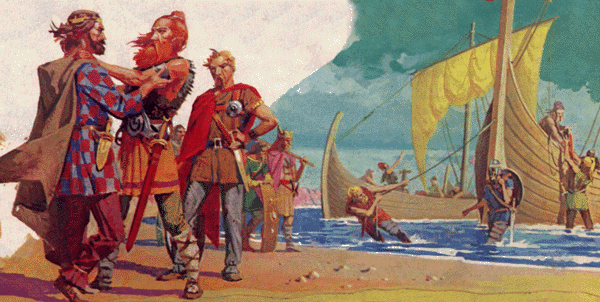
According to Nennius, a 9th Century monk in Wales - "The Saxons (Actually Jutes) were received by Vortigern, four hundred and forty-seven years (447AD) after the incarnation of Christ". [Vortigern needing help against the Picts, invites German Jutes, under the command of brothers Hengist and Horsa, as Mercenaries into Eastern England, on the Isle of Thanet, Kent.]
450 AD Other German Angle Mercenaries had colonised land North of the River Humber. It is also possible that one group of German Angles from Lincolnshire, an area called Lindis Feorna colonised the island we know now as Lindisfarne (Holy Island).
452 AD Prince Octa and Eosa hired as German Angle Mercenaries in the North to fight the Picts. They later became in charge of other Angle Mercenaries stationed in York.
453 AD Vortigern marries the Rowen daughter of Hengist, who then is given Kent and becomes King Hengist there.
455 AD 'Treachery of the Long Knives'. (Jute Revolt) Hengist invited 460 leading British Chieftains under command of their King Vortigern who were then slain at Hengist's command, during festivities to which they had been invited. Vortigern is spared but has to relinquish half his Kingdom as the price for his life. Hengist's daughter Rowen deserts Vortigern and is given by her father as a bride to the Angle prince Octa, thus forming a rebel alliance of German Jutes and Angles.
c.455 AD The 'Groans of the Britons'. The final attempt by pro-Roman Britons to get military help from the declining Roman Empire to defend Pro-Roman Brittania. "To Agitius, thrice consul, the groans of the Britons... the barbarians drive us to the sea, the sea drives us to the barbarians, between these two means of death we are either killed or drowned." [Surely a reference to Picts and Angles] The request for assistance was denied as the Legions were needed elsewhere in Europe as the Roman Empire was in decline.
c.455 AD Armed conflict later ensued between Hengist and Vortigern's Army, led by Vortigern's son Catigern at Battle of Aylesford, Kent. Horsa & Catigern both killed. Hengist receives the Kingdom.
Vortigern withdraws to the hill fort of Dinas Emrys in Gwynedd, NW Wales as his royal retreat.
[Legend has it that here Vortigern tries to build new defensive towers, but they keep collapsing. He is advised that supernatural powers are at work and he is told to kill a boy born without a father and sprinkle his blood on the ground. His soldiers bring him back Myrddin Emrys (Merlin) who tells him the problem is that underneath the fort is a hidden pool containing two fighting dragons. The White dragon of the Saxons was winning at present, but the Red dragon of the Britons will prevail. Vortigern digs underneath the fort, finds the hidden pool and frees the two dragons he finds there. The Red dragon defeats the white dragon and later becomes the symbol for the Britons in Wales. The Red Dragon remains today as the symbol for the Welsh national flag]
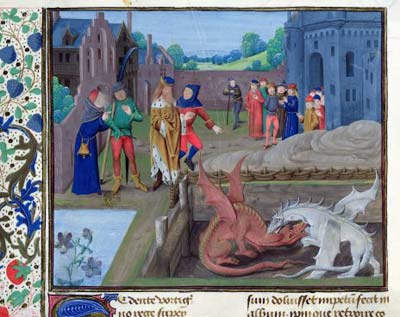
[We start with Gildas who, in his extended sermon De Excidio Britannia (c 540 CE) mentions Ambrosius Aurelianus as one of the few characters actually named by him. Recalling events just after the Saxon (Jutes) revolt and describing the plight of the Britons, Gildas says 'After a time, when the cruel plunderers had gone home, god gave strength to the survivors. Wretched people fled to them from all directions, as eagerly as bees to the beehive when a storm threatens, and begged whole heartedly, 'burdening heaven with un-numbered prayers', that they should not be altogether destroyed.
c.456/7 AD The British mostly desert Vortigern and support the Roman-British leader Ambrosius Aurelianus who may have returned to Britain from Brittany, having previously fought and campaigned in Gaul, France.
Bede mentions the Roman British leader Ambrosius Aurelianus who succeeded in defeating in battle the 'Saxons' under Hengist.
Their leader was Ambrosius Aurelianus, a gentleman who, perhaps alone of the Romans, had survived the shock of this notable storm; certainly his parents, who had worn the purple, were slain in it. His descendants in our day, have become greatly inferior to their grandfather's excellence. Under him our people regained their strength and challenged the victors in battle. The lord assented, the battle went their way.']
[This text is interesting for several reasons; in that Gildas, who hardly seems to have a kind word to say about anyone seems in awe of Ambrosius Aurelianus. It also indicates that several generations of the Aurelianii were known and that the dynasty was founded by a man who held high Roman office and thus 'wore the purple'. According to Gildas Ambrosius Aurelianus organised the survivors into a disciplined armed force and they gained the first major victory over the Saxon invaders.]
458 AD Battle of Wallop, Hampshire between (Guidolin) Vitalinus (Vortigern or his son?) and Ambrosius (battle of Guoloppum/Guoloph). Result indecisive.
c.458 AD Legend suggests that Ambrosius (aged around 44)and his brother Uther (Pendragon) with the help of fellow Briton Gorlois 'Duke of Tintagel/Cornwall' defeat and kill Vortigern who is burned to death in his wooden tower. This is believed to be near the river Wye at Doward Hill Fort. Ambrosius Aurelianus is named in text at this time as 'the Great King among the kings of Britain'.
|
Historia Regum
Britanniae, Book VIII, chapter 2 |
473 AD Hengist still alive [d.488] [N.B. This differs from the very modern and questionable 'British Chronicles' account, as do several other historic dates/events so the 'British Chronicles' cannot be guaranteed as accurate]
c.475 AD Death of King Gwrast Ledlwm (The Ragged) of Greater Rheged. His kingdom is divided between his sons: Meirchion Gul retains the central Rheged homeland and Masgwid Gloff becomes King of Elmet.
477 AD German Saxon chieftain, Aelle, lands on Sussex coast with his sons. Saxon conquest begins. [Start of the British 'forty years of fear'? The reason why this could be the start date is that 40 years later in 516 AD at the battle of Mons Badonicus the British victory was so great over the Saxons that they made little further conquest for many years after. This relies on the battle being against Saxons, but it appears from my research that almost all of King Arthurs battles appear to have been against the Picts from what is now known as Scotland)
'Landing of the Saxons' [N.B. It is vitally important for correct dating of events to understand this is the true date of the arrival of 'Saxons' and not 447 or 449 AD which was the arrival of the Angles.
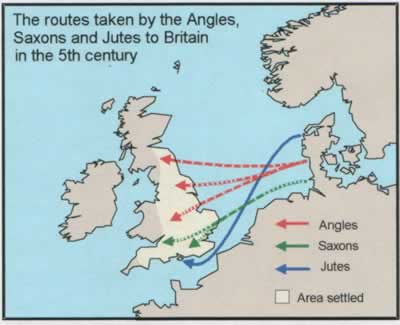
c.479 AD Ambrosius in Brittania ill, Uther 'Pendragon' his brother led the army against Vortigern's third son Paschent. [According to legend One night, Uther and Merlin saw several comets that lit the sky, in the shape of a dragon. Merlin informed Uther that his 'brother' (Ambrosius) had died from poisoning, and that he was the new king. Uther does not claim the Roman Imperium, but High King of the Britons.] Ambrosius dies, believed to have been buried in Amesbury Abbey, Wiltshire.
479 AD Legend states that Uther 'Pendragon' was infatuated with Igraine, the wife of Gorlois the Duke of Tintagel/Cornwall. Uther asked Merlin for advice. Merlin transformed Uther to look exactly like Igraine's husband. While Gorlois was busy defending his Tintagel castle, Uther seduced the duke's wife. That night, 'King Arthur' of legend was conceived.

N.B. The very first consideration a reader needs to understand is that the modern 'Legend' of King Arthur in the 20th Century comes largely from the writings of one individual in the 12th Century, 600 years after they occurred, and are very questionable at best and deliberately factually innacurate at worst. Using earlier historical records and accounts (limited as they are in the 'dark ages' period) provides a very different geographical range of locations for specific battles, names and bases for 'King' Arthur who was a 6th Century military leader apparently based in the North of Britain at or near to Hadrians Wall and in almost constant war with the Picts in what is now known as Scotland.
c.480 AD According to 'legend' Arthur was born at Tintagel castle, Cornwall, with Igraine his mother apparently dying in childbirth.
[Conflicting with this legend are 7th Century Historical records (Life of Columba) that record an Artur being the son of Aiden 'Scotti' who was the King of Dalreada from 574-608 AD. King Aiden was born in 532 AD. This Artur is considered by some to be a candidate for the legendary Arthur.
Due to the dates of the 12 known battles of 'Arthur' (Arturius) and his death in 537 AD at Camlann then Artur above and the famous Arthur (Arturius) cannot be the same person, if these dates are accepted as being correct, as his father King Aiden born in 532 AD would have been too young to be Arthur's father].
488 AD German Jute King Hengist dies, succeeded by his son Aesc (d.512)
490 AD Gorlois of Tintagel (Duke of Cornwall) dies. [N.B. There are no historical references to Gorlois before Geoffrey of Monmouth wrote about him in 1136 and this character may or may not be entirely fictitious.)
c.495 AD Uther Pendragon dies when Arthur was 15 years old. [Local Cumbria 'legend' has it that Uther died at Pendragon Castle, 20 miles from Penrith, when his drinking water well was apparently poisoned by the 'Saxons', however this cannot be true historically as in 495 AD the Angles were still being contained on the East coast and the Saxons were in the far South of England. A more credible scenario is that he died of old age, as if he was with his older brother Ambrosius in 458 AD fighting Vortigern he must have been at least fighting age then of around 20 years old (Ambrosius was 44 at this time) and up to 42 years old, so his date of birth would have been between 416 AD to 438 AD. Therefore when he died in 495 AD he would have been between 57 to 79 years old.
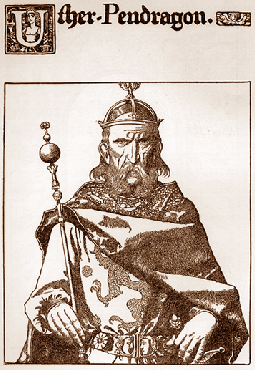
Arthur Pendragon, born and living at Tintagel in Cornwall, may have moved after the age of 15 to Cumbria possibly to the site of Pendragon Castle which is 20 miles from Penrith, home of his father Uther Pendragon (the terrible dragon). Although the current castle ruins (Mallerstang Castle) date from the 12th Century, Roman coins have been found at this site which might confirm earlier occupation. It is believed that Uther built his defences upon an original Roman site. Legend has it that Uther Pendragon tried to alter the course of the nearby River Eden into his original castle moat, but failed.
Old Provincial Rhyme: 'Let Uther do what he can
Eden will run where Eden ran'
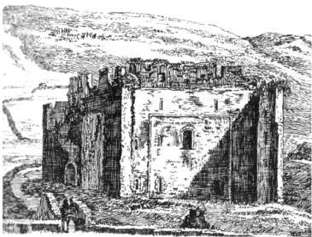
12th Century Mallerstang Castle (Built on site of earlier Pendragon Castle), Cumbria
This castle is on the strategic route of Lady Anne's Highway a former 100 mile long Roman road between Brougham, Penrith and Skipton, Yorkshire
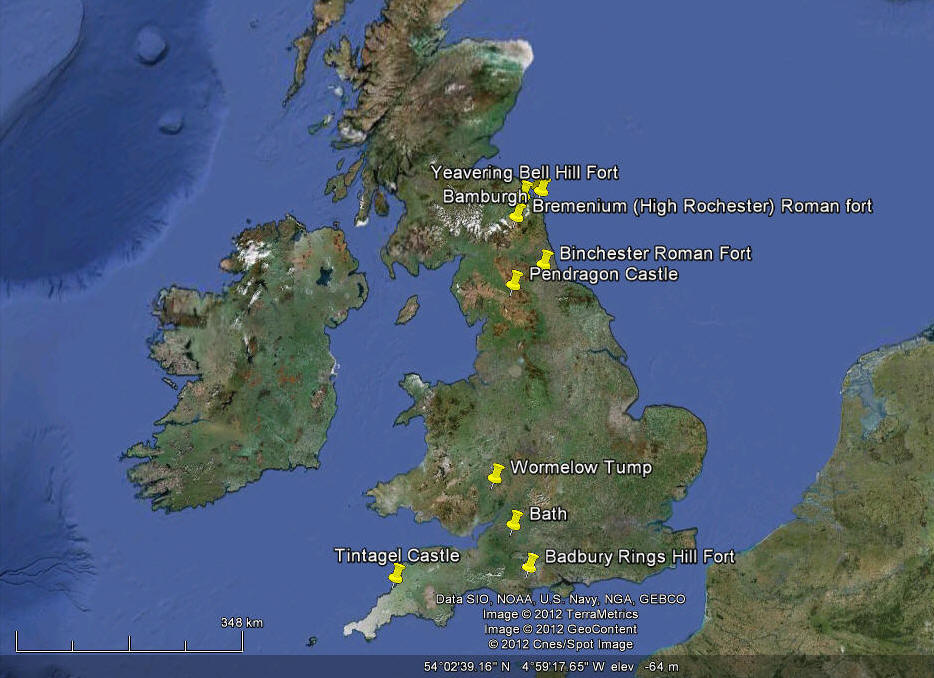
Ancient Welsh writers describe 'the residence of Arthur in Strathclyde as Penryn-Ryoneth'. In Welsh the word Penryn means Promontory or Prominent mass of land that overlooks lower land. Penrith's distinctive red sandstone Beacon Hill (Previously known as Penrith Fell) easily fits that description and the named words are very similar, 'Old Penreth and modern Penrith both being within very close proximity to this distinctive hill feature. The Roman Fort at Voreda (Old Penrith) contained 'Ala Petriana' Roman Cavalry.
In Lhuyd's Cornish Vocabulary p.238 Penryn Rioneth is called the seat of the Prince of Cumbria.
As will be described later in this section another highly probable contender for Arthur's military base is Camboglanna (Camlan) Roman Fort on Hadrian's Wall, now called in modern times Birdoswald.
'Penreth' was the old spelling of present day Penrith, Cumbria (historically part of Strathclyde) in records as far back as 1290 AD. The earlier Norman Domesday Book didn't extend as far North as Penrith, so cannot provide any guidance regarding name. Some 19th Century accounts suggest the name of Penrith in even earlier Saxon times was Petrianeth when they established their presence at the base of Beacon Hill (Penrith fell) where modern day Penrith is located, the name Petrianeth is believed to come from the Roman 'Ala Petriana', which was the name of the unit of 1,000 cavalry stationed at Stanwix, the largest Roman cavalry unit in Britain. Old Penrith a few miles to the North also had a unit of Ala Petriana stationed there from which the Saxons took the name.
Extremely close to Penrith (within 1 mile) are two locations which have been associated with King Arthur legends for Centuries.
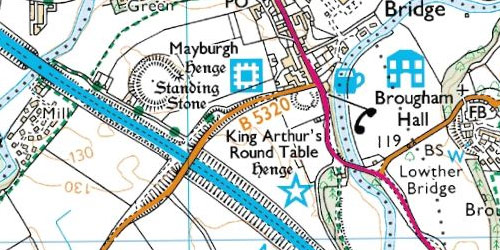
King Arthur's Round Table , referred to locally by this name for hundreds of years, a large earth mound near Penrith at Eamont Bridge. (Popular modern Legend has Knights on horseback riding on King Arthur's Round Table, this wouldn't have been easy or possible on a conventional wooden table) It is shown as figure 2 on the image below.
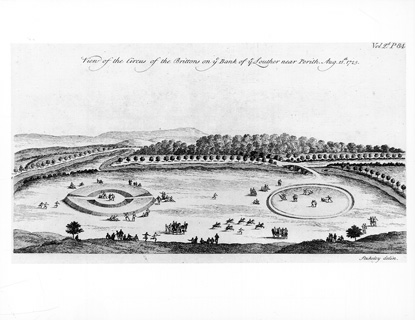
Drawing of 'King' Arthur's Round Table dated 1723
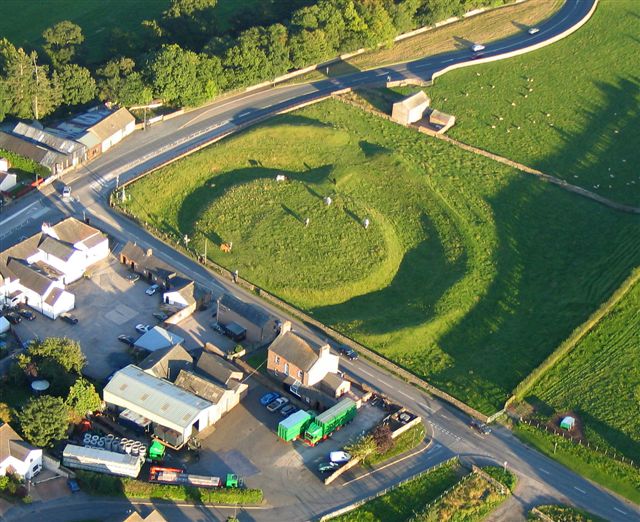
Aerial view of King Arthur's Round Table
Mayburgh henge, referred to locally in Penrith as 'King Arthur's Castle', at Eamont Bridge 1 mile to the South of Penrith. See image below. In Saxon this translates to 'Fort of Union'. It is shown as figure 1 on the image below. Constructed from thousands of river cobble stones and had a number of large standing stones within.
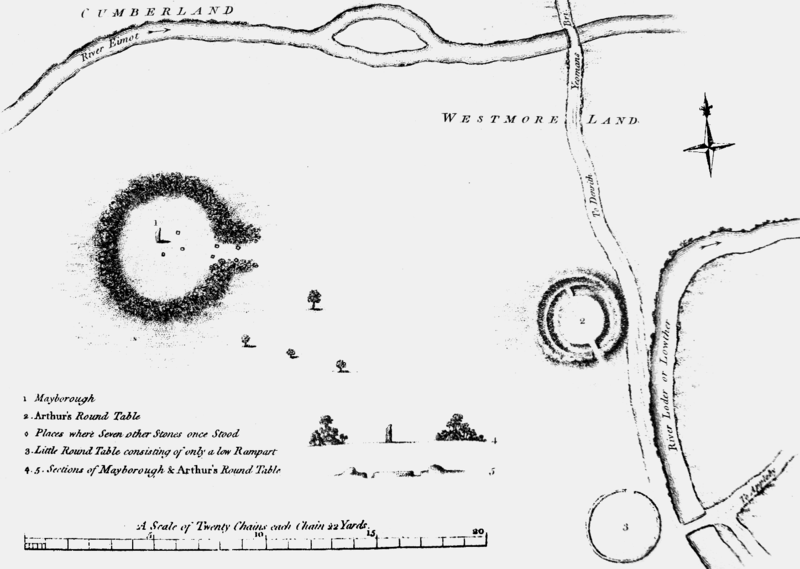
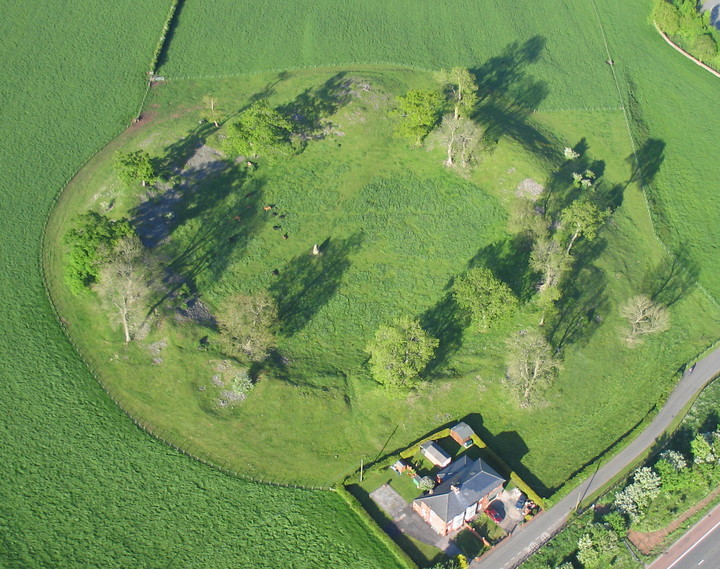
Aerial view of Mayburgh Henge
c.500-521 AD
The 12 victories of Arthur
(he would have been aged 20-41 between these years) for which
modern theories now suggest
strong
'Soldier Arthur', mentioned in text as the 'Military Commander', had 12 victorius battles along with the 'Kings of Britain' fought against either German Angles or very much more likely the Picts. A significant number of these 12 battle victories appear to be located within close proximity of or near to Hadrian's Wall, which makes sense given the bases of Romano-British enemies: from the North of Hadrian's Wall (The Picts), from the North-East Coast (Angles).
Modern archaeological research shows ONLY Birdoswald (Camboglanna) Roman fort, 16 miles east of Carlisle, as having very strong evidence of continued occupation AFTER the Romans had left Britain nearly a hundred years earlier, as will be shown later this fort with its contested identification as 'Camboglanna' may be the site of Arthur's final battle at Camlan (an obvious abbreviation), where he was mortally wounded. It is possible the sizeable cavalry fort, the largest in Brittania now buried underneath modern Carlisle (Stanwix) was also occupied.
Welsh literature refers to the Angle enemies being called 'Dog-Heads' and I wonder if this is a symbol they had on their shields or the shape of their helmets?
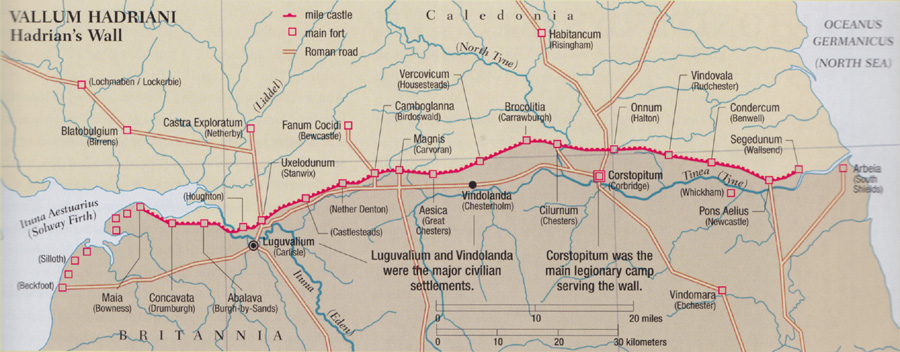
Battle 1. "At the mouth of the river called Glein". [There is a river Glen in Northumbria, close to Hadrian's Wall and Cumbria. Excavations of the hill forts there have shown occupation in the time of Arthur.] Believed to have been a battle against the Angles. The Angles were based on Holy Island (Lindisfarne) 14 miles East of Yeavering Bell Hill Fort, which dominates the area and directly overlooks the River Glen. (If you follow the river Glen towards the sea it joins the Till River and then the River Tweed where it enters the sea (at the mouth of the river) at modern Berwick upon Tweed, only 4 miles North of Holy Island where the German Angles were based. This makes perfect sense as a strategic location for this battle between Arthur (Christians) and the Angles (Pagans).
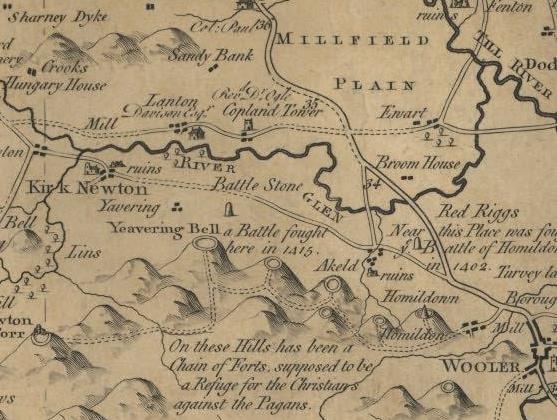
Map of River Glen in 1769, showing Yeavering Bell hill fort.
Note the reference on the Map to the 'chain of forts supposed to be a refuge for the Christians against the Pagans'. Is this a reference to the Christian Britons under Arthur's military leadership against the pagan German Angles? And/Or later defence in the 6th Century by King Urien Rheged or his allies?
The hill fort feature called Yeavering Bell (Ad Gefrin) on the above map and shown on the Google image below is fascinating, it is the largest hill fort in Northumbria and had a 900 metre long circular stone wall, possibly 3 metres high and commands distant views of Lindisfarne island where the German Angles established themselves in Northumbria. Its strategic dominance on the valley below and height at 1200 feet above Sea level in the landscape with commanding views is crucial to understand its role for many years in holding back the German Angles who were only 14 miles away on the coast. At its base (after eventual capture) was later built a huge wooden palace called 'Ad Gefrin' by the German Angles which served as the Country palace for Bernicia with the main Royal palace being at Bamburgh. The 'battle stone' between Yeavering Bell and The River Glen (Glein) shown on the above map is very ancient and is part of a megolithic circle, and whilst close to the site of a later English/Scottish battle in 1415 was not put in place then.

View from Yeavering Bell (Ad Gefrin) towards Lindisfarne (Holy) island where German Angles had their base.
Battles 2 to 5. 'Above another river called Dublas (Douglas) and is in the region of Linnuis'. [Linnuis means 'region of the water'. ] I have since come across a reference to the German Angles of Lindisfarne (Holy Island) being referred to as Lindisware (Linnius) Angles, so the River Dublas and these four (4) battles may be somewhere within the region 'controlled by them'.
Candidate rivers: to the North of Lindisfarne island is the major River Tweed entering the sea at Berwick, to the West of Lindisfarne island is the River Till and its tributary River Glen (Glein?) and to the South of Lindisfarne is the River Aln, entering the Sea at Alnwick with the major River Tyne further South. If Battle 1 was named at the River Glein (Glen?) then we can discount that river from the above candidate list.
There is also the smaller River Low, near Ross End, very close to Lindisfarne.
Also the River Liddel above Cambolanna Roman fort on Hadrians Wall.
Given that Lindisfarne Island's location is to the North-East and above Hadrian's Wall, a push by the 'Angles' would have most likely have been to the West and South-West as they had the Picts to their North.
A site which has been overlooked, and which is an excellent candidate for Arthur’s Dubglas, is the Devil’s Water next to the Hadrian Wall fort of Corbridge, which has upon it a place called Linnels. The Roman fort at Corbridge dominates the ford across the River Tyne from Roman 'Dere Street'. This is a strategic crossing on a major Route and may explain why so many battles were fought here for its control.
If battles 2 to 5 were fought above the River Tyne then I need to determine when and how this river name came about.
1066 AD called River Tyne and this river had a previously 'unknown name before Saxon times', when modern Tynemouth was called Tinanmuoe.
Roman river names:
Tinea Fluvius (River Tyne)
Vedra Fluvius (River Wear)
One other serious contender that has been suggested for the River Dublas is the Firth of Forth near Edinburgh, this was a major water obstacle to the Picts and is a very likely battle area from a military tactical point of view. The Firth of Forth used to be called Linn Giudain, could this be the region of the Linnius referred to in historical text?
Battle 6. 'Above the river called Bassas' [Location unknown. Bass is a name used in Southern Scotland for earth mounds formed naturally by rivers] Was this a battle against the Picts?
Battle 7. Nennius says this 'was in Celyddon Forest, that is, the battle of Celyddon Coed'. [This is thought almost certainly to be a forest area near the border between present day England and Scotland. Ettrick or Hutton Forest are the most likely candidates. Very likely to have been a battle against the Picts]
Battle 8. Nennius wrote 'The eighth battle was in Guinion fort, and in it Arthur carried the image of the Holy Mary, the everlasting virgin, (on his shield?) and the pagans were put to flight on that day, and there was great slaughter upon them, through the power of our lord Jesus Christ and the power of the holy virgin his mother'. [Guinion fort could equate with Binchester Fort (Vinnovium) at Bishop Auckland, County Durham. Excavations have found an early 6th Century Angle graveyard here. Nennius seems to suggest that Guinion fort was occupied at the time of the battle by the enemy who were defeated and put to flight] Believed to be a battle against the Angles
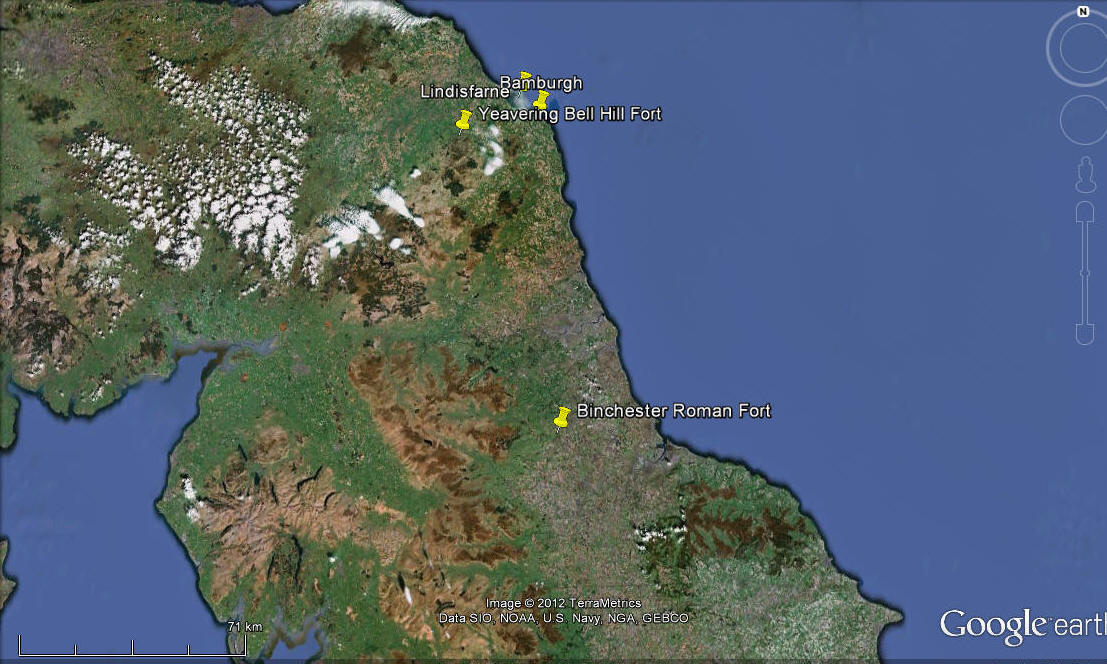
Battle 9. 'was fought in the City of the Legion (urbe Legionis).' [Location completely unknown, suggested by some modern historians to be either Chester or York purely on the basis they were major Roman fortress cities. In 1133 Geoffrey of Monmouth who made up most of the modern legend of Arthur named it as called "Cair Lion" (Caerleon Roman fortress is just on the outskirts of Newport, South Wales. This is by 'coincidence' just 20 miles from his home in Monmouth and may be his simple wishful thinking) and there is zero proof this is the 'City of the Legion' referred to by Nennius at all, like much of Geoffrey of Monmouth's story of King Arthur it is probably not historically correct, but forms a significant part of modern day legend.
Due to the disposition of German Angles at this time and the Picts both being contained either on the East Coast or above Hadrians Wall respectively, the most probable contender has to be the City of Carlisle on the West end of Hadrian's Wall which had been a Roman City with a huge Roman Legion cavalry garrison of 3,000 to 6,000 horses, the largest in Brittania. Hadrians wall had been breached before by the Picts so Carlisle being so close is a possibility.
There are 33 Roman cities in Britain to choose from, where Legions were garrisoned. Could it have been the Northern Carlisle, not far from Hadrian's Wall? There were 3 Legion 'fortresses' at this time, Caerleon, Chester & York, the question is was Nennius referring to a City containing a Legion (1 of 33), or a Legionary Fortress (1 of 3)?] my thoughts are that it is a Northern City containing a legion i.e. Carlisle closest to the Picts, if the enemy were the Picts and they had breached Hadrian's Wall as was known to happen.
Battle 10. 'on the banks of the river called Tribruit (Tryfrwyd)'. Tryfrwyd meant 'three streams (or torrents)' [again this is most likely somewhere in Northumberland or near Hadrian's Wall].
Battle 11. The eleventh battle was fought 'on the mountain which is called Agnet (Agned) (Breguoin)' [Is Agned now called Edinburgh as some modern historians believe? Arthur's Seat is a place name there.] Possibly a battle against the Picts.
[Another suggested site is (Bremenium) High Rochester, Northumberland Roman Fort OS Grid NY 8398 lies on the strategic routes intersection of Roman Dere Street and Hadrian's Wall. A major objective for Angle conquest. However, whilst on high ground I wouldn't have thought this was could be described as a 'mountain' and therefore discount it.]
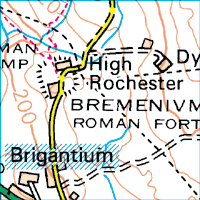
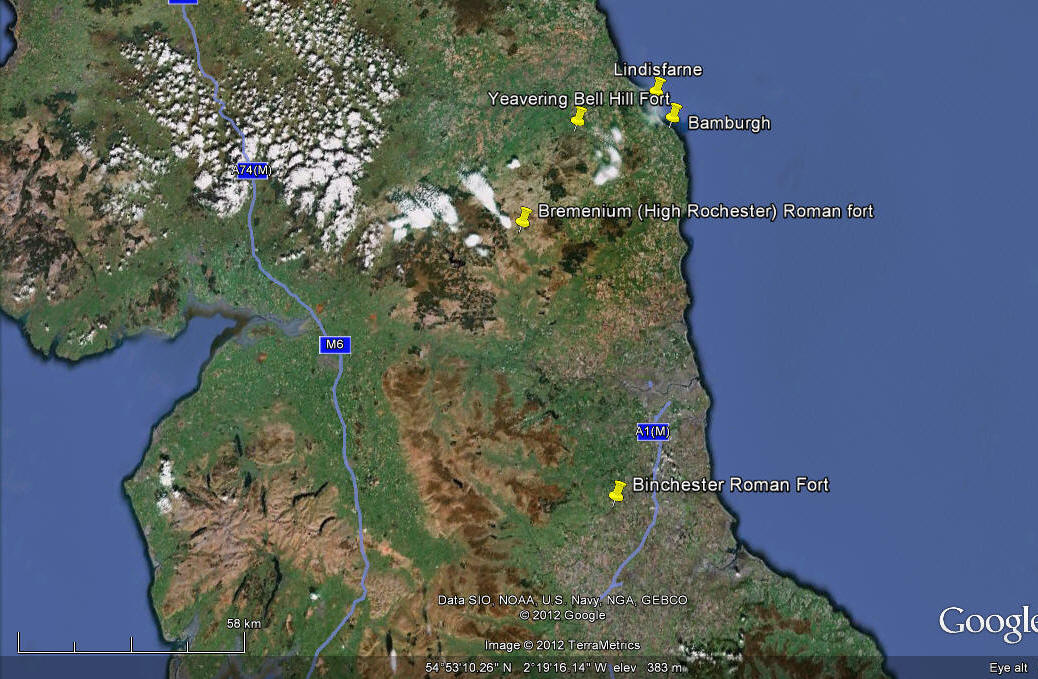
521 AD Battle 12. Battle of Mons Badonicus. (Badon Hill) Arthur's final victory took place 'on Badon Hill and in it 960 men fell in one day, from a single charge of Arthur's, and no one laid them low save he alone; and he was victorious in all his campaigns'. (It is suggested Arthur was in charge of a significant number of Romano-British Cavalry, which the Angles and Picts had none.)
[Gildas - "when took place also the last almost, though not the least slaughter of our cruel foes, which was (as I am sure) forty-four years and one month after the 'landing of the Saxons'([477 AD] therefore making this take place in 521 AD), and also the time of my own nativity." Gildas born 477AD died in 569 AD, aged 92 years] (Arthur born c.480 would have been around 41 years old now, just past his physical prime)
The location for this battle has not been determined. However it was apparently fought against the 'Saxons' and was a siege. The victory resulted in the 'Saxons' not making any further advances for many years afterwards.(18 years later approximately Arthur was killed at Camlann) Is this reference to 'Saxons' once again erroneous and the historical reference is actually to the Angles? Probably.
Badon Hill therefore must be somewhere in the Northumbria/Holy Island (Lindisfarne area) if the enemy were German Angles. Possible hills include the heights close to Bamburgh castle as they are the nearest dominating high ground to Lindisfarne or Yeavering Bell Hill Fort and its neighbours. Capture of that hill fort would allow the Angles to finally expand from the East coast so it must have been their primary strategic target. The Angles eventually did capture it and built a palace there called AD GEFRIN many years later.
Interestingly excavations in 1885/6 uncovered enormous quantities of horse bones and complete skeletons of horses outside the entrance to the main enclosure walls of Yeavering Bell fort. Could these be the remains of Romano/British Cavalry of either Arthur or the later Urien Rheged used to fight the Angles who had no Cavalry?
I have just found a reference that Arthur's enemy at this battle was Angle 'Ossa' or 'Osla Big Knife'. Osla's son was Eoppa and Eoppa's son was Ida (The Flamebearer), considered by Bede to be the founder of the Bernician dynasty and who founded and ruled Bernicia from 547-560. If this is correct then Mons Badonicus would almost certainly have been in Northumbria or close by.
If however the enemy was Picts then Mount Badon (Badon Hill) must be somewhere nearer to Glasgow or Edinburgh. One serious contender is Bowden Hill Fort NGR NS9775 7440, in West Lothian just a short distance to the North West of Edinburgh and commanding the approach South from where the Picts were based should they have crossed the significant river obstacle of the Firth of Forth.
Another serious contender is Eildon Hill (422m high), near modern day Melrose, as this hilltop contained the largest hill fort in the whole of Scotland (home to the Selgovae tribe) was the site of the Roman Trimontium Forts controlling the crossing of the River Tweed and is on the primary route between Hadrians Wall and Edinburgh. Bowden and Bowden Moor are very close by, Badon and Bowden are similar sounding. There is local legend that King Arthur and his knights sleep under this hill. This fort has shown evidence of reoccupation by the end of the 4th century.
Again Geoffrey of Monmouth erroneously suggests that Badon Hill is at Bath. Bath was a Roman Spa not a Roman fortress and is too distant from the other battles or areas under the control of the Saxons/Angles.
T
There are few other historical references to Arthur, but those that do exist suggest areas not in the North, however these references date from sources written 600 or more years later, so their credibility and accuracy are in doubt as are those of Geoffrey of Monmouth from whom much of popular modern legend and disinformation has arisen.
"There is another wonder in the region which is called Ercing. A tomb is located there next to a spring which is called Licat Amr; and the name of the man who is buried in the tomb was called thus: Amr. He was the son of Arthur the soldier, and Arthur himself killed and buried him in that very place. And men come to measure the grave and find it sometimes six feet in length, sometimes nine, sometimes twelve, sometimes fifteen. At whatever length you might measure it at one time, a second time you will not find it to have the same length--and I myself have put this to the test."
Was Arthur's son Amr killed in battle? Or was he killed by his father in a non battle related incident whilst travelling between the North and the South?

Another of Arthur’s sons, Llacheu, also appears to have a traditional burial site. In the perhaps tenth-century Ymddiddan Gwyddno Garanhir ac Gwyn fab Nudd we find evidence for the existence of some story of his death:
"I have been where Llacheu was slain
the son of Arthur, marvellous in songs
when ravens croaked over blood."
Where this occurred is not stated but we find, in a thirteenth-century elegy by Bleddyn Fardd, the statement that ‘Llachau was slain below Llech Ysgar’.
There are few other historic references to Arthur other than:
"There is another marvel in the region which is called Buelt. There is a mound of stones there and one stone placed above the pile with the paw print of a dog in it. When Cabal (Cafall), who was the dog of Arthur the soldier, was hunting the boar Troynt, he impressed his print in the stone, and afterwards Arthur assembled a stone mound under the stone with the print of his dog, and it is called the Carn Cabal. And men come and remove the stone in their hands for the length of a day and a night; and on the next day it is found on top of its mound."
Today the paw print of the hound Cafall is said to still exist in a rock on top of the mountain of Carn Gafallt in North Brecknockshire, Powys, between Rhaeadr and Builth Wells, some 1,500ft (466m) above the upper Wye, in the Elan Valley. Hence the rock was named 'carn cabal' now gives name to this whole hill as Carn Gafallt, after the carn alluded in the Historia Brittonum, as one of three prehistoric cairns on its southern brow above Talwrn at SN 943644.
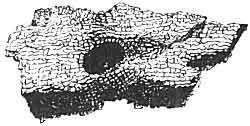
Drawing of the Carn cabal paw print stone from 1849
From 1840 search: "On one of these carns may still be seen a stone, so nearly corresponding with the description in Nennius, as to furnish strong presumption that it is the identical object referred to. It is near two feet in length, and not quite a foot wide, and such as a man might, without any great exertion, carry away in his hands. On the one side is an oval indentation, rounded at the bottom, nearly four inches long by three wide, about two inches deep, and altogether presenting such an appearance as might, without any great strain of imagination, be thought to resemble the print of a dog’s foot" . . .”

535 AD King Meirchion Gul (the Lean) died (he was a Great Grandson of Old King Cole) he had three sons, and Rheged was divided into North Rheged now ruled by his son king Cynfarch Oer (The Dismal) and South Rheged ruled by Elidyr Llydanwyn (The Stout & Handsome).
[North Rheged appears to be Cumbria (Cumberland) and South Rheged parts of Westmorland and Lancashire.] Cynfarch Oer's son is/will be the famous Prince/King Urien Rheged.
536 AD It has recently been established that in this year a huge volcanic eruption occurred in Iceland which lead to 18 months of darkness with summer temperatures that year dropping to only 1.5-2.5 C (36.5 F), crops failing and widespread starvation. It has been described as the worst time to be alive.
Hypothesis: Given that everyone was starving, any major store of food from the previous year's crops would have been crucial to either keep or capture. The Picts would have seen the former Roman major granary store at Cambolanna fort on Hadrian's Wall as essential to capture for their very survival, this fort is believed to be the site of the battle of Camlann, in the very next year, where Arthur was mortally wounded.
537 AD Arthur (aged around 55) was killed at the battle of Camlann. Arthur's enemy at this battle was Mordred (Medraut), son of Lot, the King of the Picts.
"Bet mab Ossvran yg Camlan, gvydi llauer kywlavan."
(The grave of Osfran's son, after many a battle, is at Camlann.)
[Morfran is apparently a survivor of this battle and had fought on Arthur's side. After two days battle apparently only 7 escaped believed to be from Arthur's forces]
[Some modern historians recognise this battle-site 'Camlann' as the Roman fort of Camboglanna, near Hadrian's Wall. The place is now 'possibly' called Birdoswald. Camboglanna (Castlesteads or Birdoswald Roman Fort, there is contested identity) is around 30 miles away from Penrith or Carlisle.
ONLY Birdoswald Fort has been found so far to have strong archaeological evidence of continued occupation after the Romans had deserted Britain. If that was the only major occupied fort on the wall apart from possibly Stanwix then it would have been a prime strategic target for the Picts to overrun in their push South past Hadrians Wall. It makes sense that if Arthur had defeated the Picts in battle many times before, he and his base of warriors woudl be the prime strategic target for the Picts to attack and overcome.There is archaeological evidence that shows large wooden halls were built on the ruins of th egranary houses within Camboglanna after the Romans had left Britain. The West and East gates of the fort were walled up in a crude non-Roman fashion, to aid the defence of the fort from the Picts.

When you look at the location of Roman Camboglanna Fort (Birdoswald as shown on this map) on the Western end of Hadrian's Wall it tends to confirm some suggestions that the enemy was the Picts and not the Angles who remained for many years afterwards stuck on the East coast. Other theories have suggested Saxons, but I think this is highly unlikely for this battle site.]
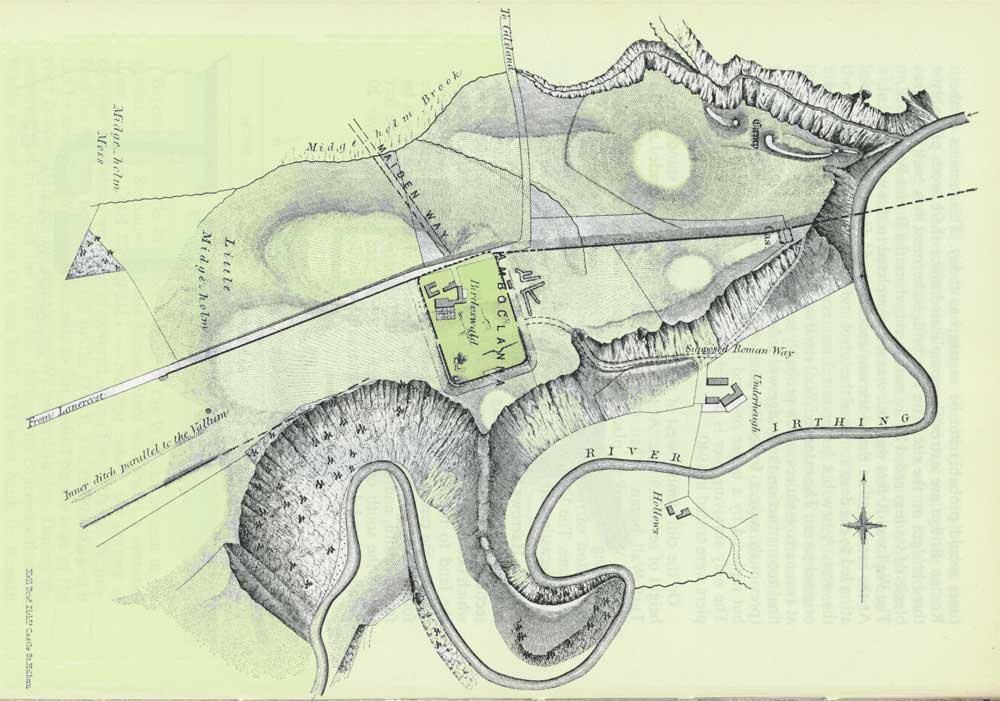
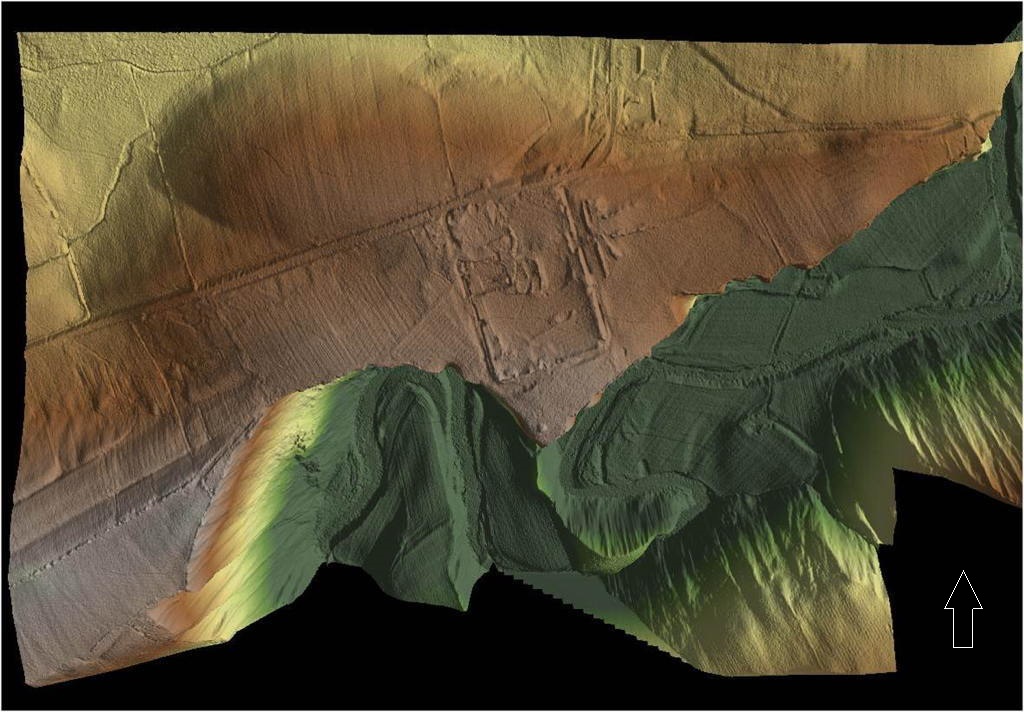
The gravely wounded Arthur was according to legend taken to 'Avalon' (referred to as the isle of apples). [Modern historians think this may be 'Aballava' the Roman Fort at what is now Burgh by Sands, Cumbria, not far away from Camboglanna! Aballava means 'orchard' too! A 7th Century document the Ravenna Cosmography refers to it by the name of Avalana!] The small church in the hamlet of Arthuret near Longtown, North of Carlisle is said by 'legend' in modern times to contain the head of Arthur. The original name of the land was Arthur's Head, before becoming Arthuret.
538 AD the Gododdin were not yet under siege from the Angles, but they were defeated in a great battle at Edinburgh after an onslaught by the Caledonians, a massive confederation of highland tribes from northern Scotland.
O

547 AD German Angle chief Ida the Flamebearer rebels and seizes Bamburgh (Din Guyardi) from Brythonic King Morgan Bulc, on the North-East coast and makes it the Capital of the area that would become known as Bernicea. Apparently Ida had come from a base to the North, somewhere in the Forth area of what is now Scotland. Ida built Bamburgh into a fortress surrounded first by a hedge then by a wall.
550 AD Galloway (Damnonia) is invaded by king Cynfarch Oer (The Dismal) of North Rheged and is annexed. King Senyllt of Galloway flees to the Isle of Man.
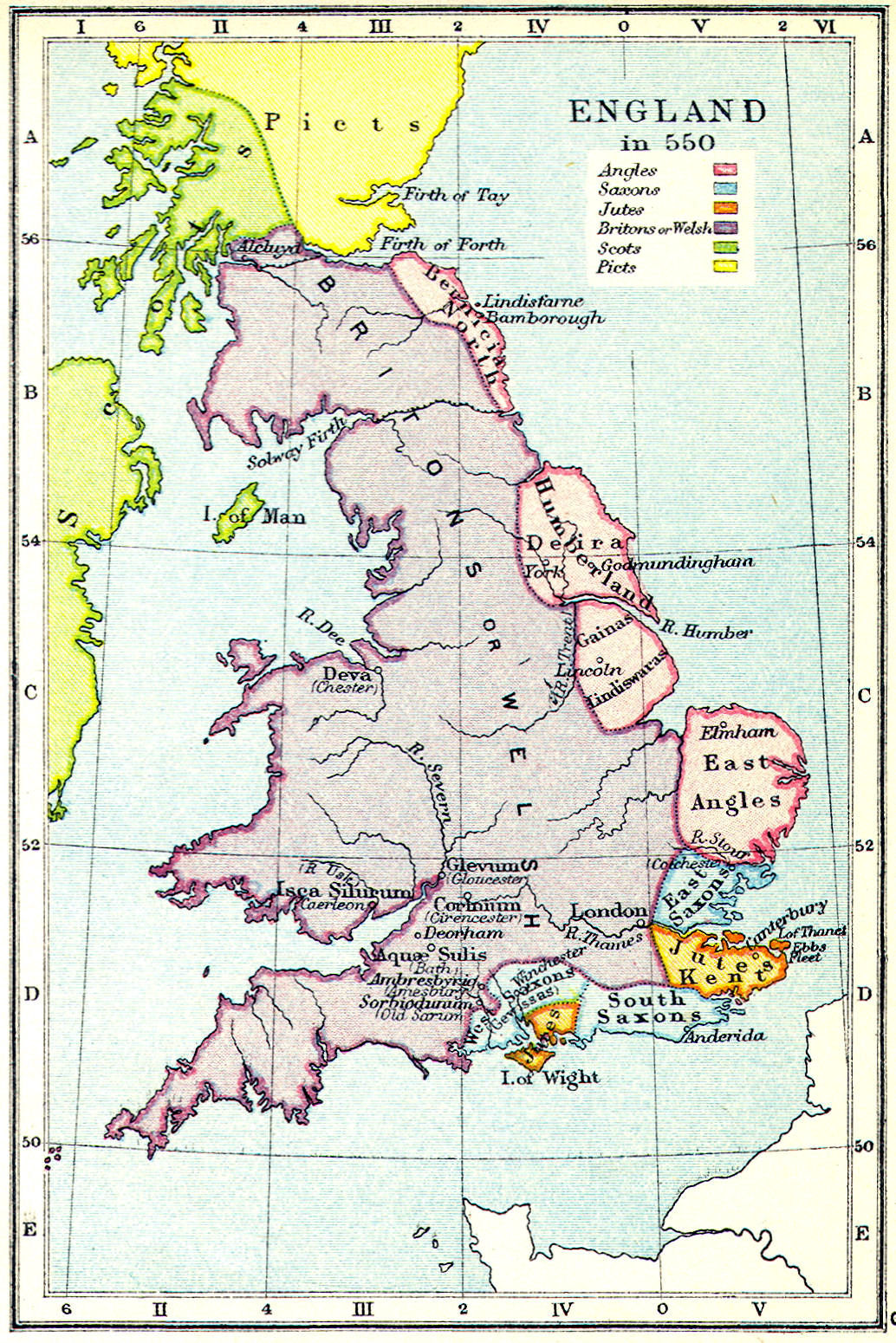
559 AD German Angle King 'Ida the Flamebearer' dies and is succeeded by his son 'Theodric the Flamebearer' of Bernicia. Upon the death of Ida, AElla of Deira throws off Bernician rule, seizes the sub-kingdom and becomes himself King AElla of Deira.
560 AD king Elidyr Llydanwyn of South Rheged killed on the beach at Caernavon attacking his brother-in-law Rhun of Gwynedd. Llywarch Hen (the Old) son of Elidyr succeeds and becomes Last King of South Rheged.
570 AD King Cynfarch Oer (The Dismal) of North Rheged dies and is succeeded by his son King Urien Rheged of Arthurian legend. [The Great, great, grandson of Old King Cole.] It is not realistically possible for Urien and Arthur to have lived at the same time due to age differences if Arthur was born at Tintagel c.480 however if Artur is Arturis son of king Aiden Of Dalreida then he would have been alive at the same time and his historically known sister Morgan could have married Urien Rheged!) were there two Arthurs and their histories have become jumbled into one?
Urien's power base is believed by some to have been Carlisle with other (summer) palaces possibly at Caer-Brogwm (Brougham), which is next to King Arthur's Round Table and Mayburgh Henge at Eamont Bridge, just outside Penrith!! [Urien is thought by some to have married legendary Arthur's half-sister Morgan-Le-Fay, however other historians think it was a person with a similar name and not Morgan-Le-Fay and I too believe it is Morgan sister of Arturis] [Urein had a twin sister called Efrddyl]
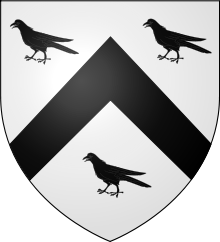
Urien Rheged's coat of Arms, a 'Black raven on a white background'. [The shield depicted above was attributed to Urien in the Middle Ages, however a black raven on a white background is written about in historical accounts of Urien and numerous mentions of 'Ravens' abound in battle accounts]
[Note the Black Ravens, which are referred to in several historical texts about Urien's battles]
Urien himself is also believed to have been primarily a leader of Romano-British light Cavalry when in battle. The German Angles had no Cavalry. In Roman times there had been a Cavalry unit stationed at Stanwix, Carlisle of 1,000 horse.
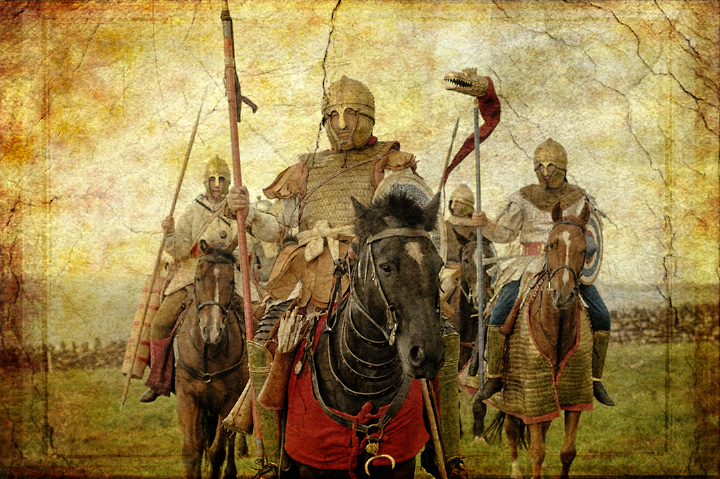
570 AD Battle of the Cells of Berwyn. Urien Rheged kills AEthelric son of Ida near the headwaters of the river Tees at (Bremenium) High Rochester, Northumberland Roman Fort lies on the strategic routes intersection of Roman Dere Street and Hadrians Wall.
573 AD The Battle of Arfderydd (Arthuret) between Peredur (of York?) with his brother Gwrgi (Cousins or nephews of Urien Rheged) against Pagan Prince Gwenddoleu ap Ceidio, ruler of Salway. Both Peredur and Gwenddoleu died at this battle.

Arthuret Church above
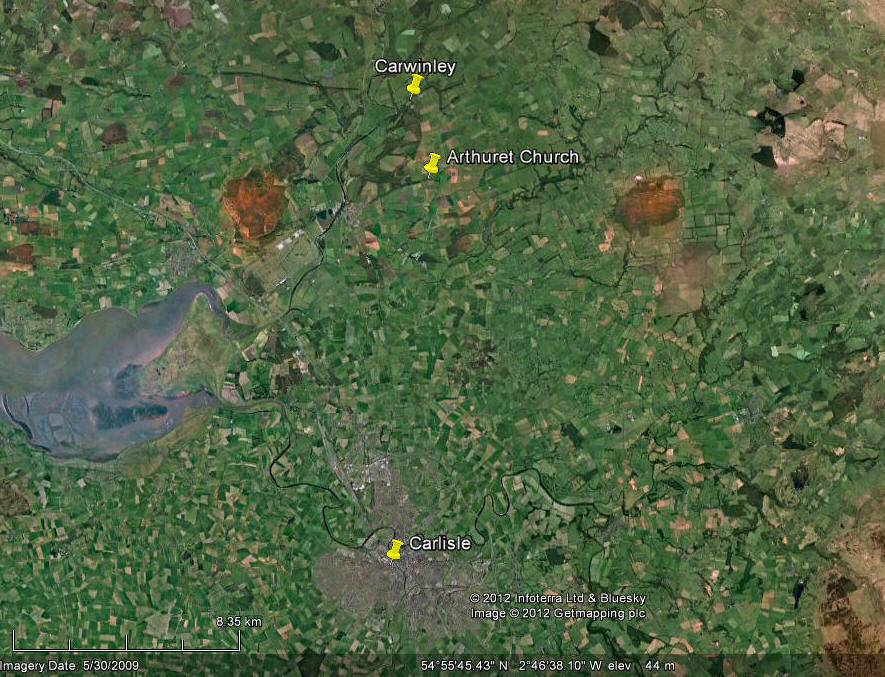
[Interestingly according to the 1869 book Arthurian localities, page 70, is a reference to Carwhinelow (now called 150 years later Carwinley), with Carwhinelow being then suggested as a corruption of Caer Wenddolew or 'Fort of Gwenddoleu', which would make perfect sense.] There is a distinctive earthwork fortification just North of Carwinley on the South bank of the river Esk, known as Liddel Strength, it is believed that the first phase of this battle took place there (called actions at Erydon by Merlin) and then prince Gwenddoleu retreated to Arthuret where the final phase took place.
Prince Gwenddoloeu of Salway (modern name Solway) was killed in this battle and his court adviser Myrddin Wyllt (Merlinus/Merlin) went mad with grief and fled into the nearby Caledonian forest. (This was 36 years after legendary 'King' Arthur had died, Merlin being part of King Arthur's court was fiction created by Geoffrey of Monmouth in the 1100's)
Prince Gwenddoleu ap Ceidio wasn't a major figure, it is believed that he may have been ruler over a much smaller area around Birdoswald or Longtown, known then as Salway. [Urien's brother Arawn may have become ruler over Salway until his death in 592 AD]
[At this battle 'seven score' died i.e. 7x20 = 140 died.]
|
[An interesting poem from a historical perspective, written by Merddin (Merlin) sometime after 573 AD:
Line 3 suggesting that Merddin (Merlin) had 'seven score and seven' apple trees planted in tribute to the loss of Prince Gwenddolau and his Army in whose court Merlin is believed to have worked.
Line 17 Prince Gwenddolau was a Pagan Brythonic ruler who ruled over Arfderydd (Arthuret, Cumbria). [Longtown may have been his base.]
Line 30 Pengwern was a Brythonic settlement East of Powys in Shropshire on the English/Welsh border.
Line 33 Rhydderch Hael King of Strathclyde c.563-c.597 is an enemy of Prince Gwenddolau and hunted for Merlin after killing Prince Gwenddolau at the battle of Arthuret in c.573. Merlin had fled into the nearby Celyddon woods.
Line 35 Gwendydd is believed to have been the name of a twin sister of Merddin (Merlin).
Line 47 Menwydd, the location for this place has not been identified by me yet. [Could it be Menwith Hill in North Yorkshire? Similar sounding word.]
Line 51 Merddin (Merlin) has accidentally slain his sister's son (son of Gwendydd) as she had married King Rhydderch Hael and his forces had been in this battle, their son fighting against Prince Gwenddoleu.
Line 55 Reference to desire for a re-coming of Arthur being a (previous) leader of hosts
Line 56 Reference to Medrawd and Arthur previous battle of Camlan
Line 58 Gwenhwyvar (Guinevere) wife of Arthur, who had been unfaithful to him.
Line 59 Cadwaladr is the son of King Cadwallon of Gwynedd (who died in battle in 634)]
575 AD Battle of Gwen Ystrad (Or White Strath). King Theodric and Urien Rheged battled (on the banks of the upper Tees???) Urien was victorius. Urien's champions at this battle are described as the "men of Catraeth".[Catterick? Not proven]. I have found this excellent website Caelin's Chronicle with an interactive map that suggests Catraeth was an area North of Salway between the rivers Tweed and Teviot in Southern modern day Scotland.
See Taliesin reference for clues to battle location
'A mound and slanting ground obstructing'
'Hand on the cross they wail on the gravel bank of Garanwynyon'
'When he furiously attacked his foes at the white stone of Galystem'
Y Gododdin
written by the Welsh poet, Aneirin, c. 6th century. Here, the poem
only mentioned his name, once, referring to a warrior in the poem as
being brave "but he was no Arthur".
|
[This appears to have been a battle between the armies of Gododdin and Rheged, led by Urien. Note the reference to Black ravens and not being as good in his opinion as Arthur.
There is a suggestion that Garanwynyon is the same place as Arthur's 8th Battle at Guinnion Fort]
579 Battle of Argoed Llwyfein. Theodric and Urien battle again (location unknown) Urien and Owain won, Theodric slain.
Urien is depicted as being a Cavalry leader, the earlier reference to numerous horse skeletons and bones outside Yeavering Bell may be related to this battle?
[River Lyvennet (means abounding in Elm trees) in the Lyvennet Valley, Eden Valley, Cumbria. Crosby Ravensworth is considered to be the site of Urien's summer palace. (NY619149) (Urien's motif is the Black Raven)]
It was at this battle that King Theodoric Flamddwyn (the Firebrand) of Bernicia was killed by Urien's son Owain.
|
The Battle of
Argoed Llwyfain
Attributed to Taliesin
|
|
On Saturday morning there was a
great battle From sunrise to sunset Fflamddwyn advanced with four companies; While the army of Goddau and Rheged was gathering Summoned from Argoed [NE Wales] and as far as Arfynydd [Anglesey] They shall not delay even for a day Fflamddwyn shouted with great boasting 'Will they give me hostages? Are they ready?' Owein answered, the ravager of the east 'They will not give them. They were not, they are not ready; And a brave whelp of Coel's breed would be sore afflicted Before he gave a single hostage.' Urien, lord of Yr Echwydd [Unidentified but could sound in Welsh like Rheged], shouted 'If there be talk of peace, Let us raise a rampart on the mountain. Let us raise our faces over the top. Let us raise our spears over our heads men, And charge Fflamddwyn in the midst of his host And slay him and his companions.' By the Elm Wood there were many corpses Ravens were blooded by the warriors And men rushed forward with their chief. For a year I will sing a song to their victory! |
[
Of Crosby Ravensworth ANTIQUITIES.
Within this parish we have:—Stone Circles, (1) called the "Druid Circle"
half a mile W. of S. from Oddendale; (2) another half a mile N.N.E. of
Hardendale; (3) a circle and tumulus at Iron Hill, three quarters of a mile
S. of W. from Harberwain.
Tumuli:—"Penhurrock" on Coal Pit Hill; (2) "Seal howe," half a mile S. of
Oddendale; (3) a long barrow, quarter of a mile west of Oddendale; (4)
another north of Iron Hill circle; (5) another a quarter of a mile south of
Harberwain; (6) one on Dale Moor; (7) another half a mile N.N.W. of Meaburn
Hall; (8) one on Bank Moor, one and a half mile south-east of the church;
(9) two east of Gilts; (10) one on Crosby Gill three-quarters of a mile
south of Crosby Lodge; (11) another a quarter of a mile W.N.W. of the last
at an altitude of 1156 feet; (12) another one mile E. of S. from Gilts.
British Settlements:—(1) "Ewe Close"; (2) "Ewe Locks" onethird of a mile
south of Ewe Close; (3) "Burwans" a quarter of a mile north-east of Crosby
Lodge; (4) "Howarcles" a quarter of a mile S.S.E. of Woodfoot; (5) another
on Wickerslack Moor; (6) "Burmont" between Reagill and Sleagill.
Collingwood, Ancient Monuments.
Roman Road:—"Wicker Street" came up from the fort at Low Borrow Bridge, but
instead of crossing the Lune eastward to the village of Tebay as the modern
Turnpike does, it continued straight northward following more or less in the
line of the railway as far as Sproat gill, it then passed Howe Nook and made
a straight line for three miles over Crosby Ravensworth Fell to Ewe Close
where the line is well marked. From the British Settlement of Ewe Close the
road led on to Harberwain, Wickerslack, Reagill, Sleagill and Sandwath
Bridge to Brougham.
Crosby Ravensworth Dyke:—There are the remains of a dyke, some
three-quarters of a mile long, running parallel with the Lyvennet beck north
and south, and lying midway between the British Settlements of Ewe Locks on
the west and Burwans on the east. From: 'Parishes (West Ward): St Laurence,
Crosby Ravensworth', The Later Records relating to North Westmorland: or the
Barony of Appleby (1932), pp. 302-324. URL: http://www.british-history.ac.uk/report.aspx?compid=43522
Date accessed: 17 July 2012.]
580 Battle of Caer Greu (Roman Fort at Cawthorn), where Urien's cousins Peredur (Steel Arms) of Eborac (of York?) and his brother Gwrgi were killed by Angle King AElle of Deira (aka Eda Great Knee? - Welsh Triads reference) who had sallied out of Bamburgh with his Army. [Apparently as a result of Peredur's death and defeat York fell, Urien had to rush troops to Catterick]
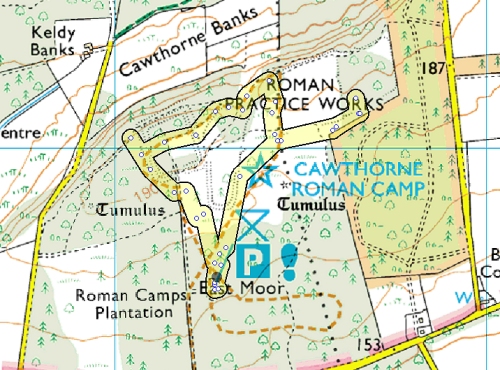

584 AD German Angles have spread West slowly, but still halted by King Urien Rheged in Cumbria
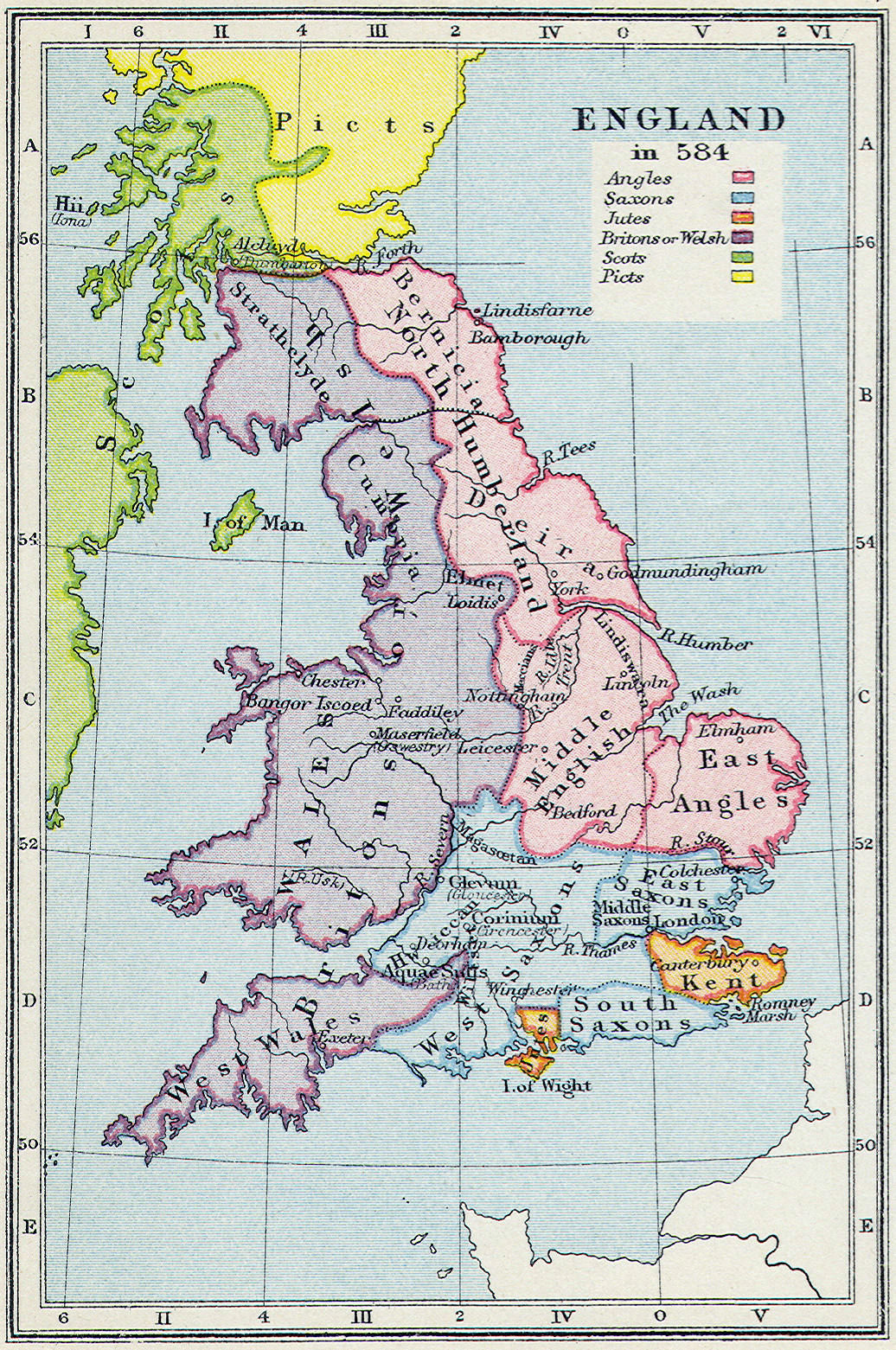
588 AD German Angle King AElle of Deira dies and is succeeded by Hussa
590 AD Bamburgh (Din Guyardi) captured by King Urien Rheged and his Brythonic allies from the German Angle King Hussa, who is then besieged at Lindisfarne and nearly driven out.
Urien Rheged besieged the German Angles on Lindisfarne Island for 3 days and 3 nights.
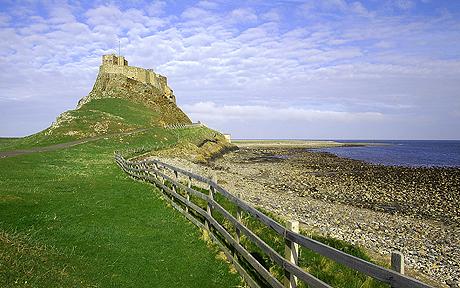
However Urien was later assassinated by a man called Llofan Llaf Difo (Severing-Hand) at nearby Aber LLeu (modern nearby Ross Low on the nearest land approach to Lindisfarne island) aka 'Lleu's estuary', at the instigation of king Morcant Bulc a British ally fearing Urien's power over all the Britons should he defeat the Angles, which he was close to achieving. The alliance of the four Brythonic kingdoms collapsed. His [Urien's]chest had been pierced by a staff (or spear) ref: Red Book of Hergist].
Urien was beheaded and his head was carried home by his son Owain map Urien. [Presumably because the distance home was many days horse ride away and the sight of his body would have unnerved his followers on the route home] His corpse was buried beneath a cairn, under blue stone covers. [I have visited Ross Low and the natural stone there is blue]
From 570-590 Urien Rheged had ruled and been a strong King over Rheged, keeping the Angles confined and nearly driving them out.
*Ac yny vallwyf hen ym
dygyn aghen. Ny bydif ymdirwen na molwyf Vryen.
"Until I am old and ailing, in the dire necessity of death, I shall not be
in my element if I do not praise Urien."
~ Llyfr Taliesin
Uriens twin sister Efrddyl is in mourning
Owain map Urien (son of Urien Rheged) succeeds as king of North Rheged. [He becomes in later legends, written in the 1800's, a Knight of King Arthur's Round Table and is mentioned at being present in King Arthur's court, however this is not historically possible as historical Arthur died in 537 AD. However he would have been alive at the time of Arturis and his father Urien had married Morgan sister of Arturis]
Civil War breaks out between the 13 kings of Northern Britain.
591 AD King Dunaut Bwr (The battle Horseman) aka King Dunawd of the 'Northern Pennines' and previously an ally of king Urien Rheged mounts an invasion of North Rheged, but is repulsed and defeated by its King Owain, and his brother, Prince Pasgen.
Prince Elfin (of North Rheged?) defeats a simultaneous attack by King Gwallawc Marchawc Trin (aka Gwallarg) of Elmet.
592 AD German Angles under Hussa invade the mainland again from Lindisfarne and are only stopped by Owain of Rheged who slays Hussa in battle.
Ethelfrith (Ethelfrid in Bede's history) succeeds as Angle King of Lindisfarne from his father King Hussa. Urien's brother Arawn dies and King Rhydderch Hael absorbs Salway into Strathclyde,
595 The aging King Dunaut Bwr (The Stout) of the Northern Pennines dies fighting off a Bernician invasion. His Pennine kingdom 'Dunoting' is overrun by the German Angles.
597 British King Morcant Bulc, king of Bryneich, dispossessed king of Bernicia, attacks Rheged and kills Owain, fatally weakening the Rheged kingdom. Prince Pasgen his brother flees to the Gower peninsular in Wales. Owain was buried in a secluded part of the world, under the sod of Llan-Morvael (Llan Morvad), in LLan-Heledd which has not been positively identified. [Some believe this may be in what is now St.Andrew's church yard in Penrith, but this is unproven and may be confused with the Giant's grave of the later Owen Caesarius?]
"Bet Owein ab Urien im pedryael bid, dan gverid Llan Morvael."
(The grave of
Owein ab Urien is
square-fashioned,
'neath the earth of Llanforfael.)
"His grave is girted with four stones. Llan-Forfael (church of the Great prince) in LLan-Heledd"
St.Mungo (St. Kentigern) is a possible son of Owain map Urien. However, he may have been born in 528 AD to Thenew the daughter of Loth, King of the Goddodin which makes him too old to be the son of Owain map Urien.
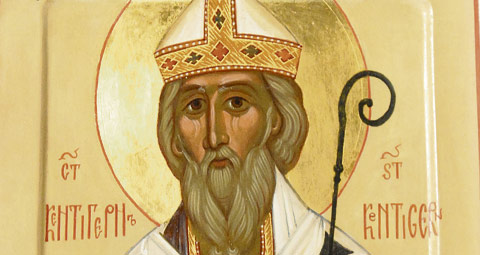
597 AD Elfin map Owain (son of Owain) becomes king of North Rheged. The Book of Taliesin was written by a poet called 'Taliesin of Rheged' c.534-599 in the 6th Century, it contains several references to Arthur and Urien. Prince Pasgen flees to the Gower peninsular.
598 AD Rhun youngest son of Owain kills King Morcant Bulc of Breneich at the Battle of Catraith. [This location is believed by some to be Catterick, in North Yorkshire, but this theory remains unproven. A battle between German Angle King Æthelfrith of Bernicia who defeated Mynyddog of Gododdin.]
[Also at this battle was Cynon ap Clydno, a hero here, whose lover was Owain's twin sister Morvudd (Morfydd), daughter of Urien Rheged.] Apparently 363 mounted horsemen (cavalry) on the British side against several thousand German Angle infantry. Despite killing many of the Angles they were slaughtered by overwhelming numbers. Only 3 or 4 British warriors survived this battle Rhun, Cynon, and Aeron's two war hounds.
This was the final decisive battle of the 6th Century and a catastrophe for the fragile alliance of British kings.
c.603 AD Battle of Degsastan (Degsa Stone) where 'Aedan king of the Scots' [alternative possible father of Arturius] brought a large army against German Angle King Ethelfrith (Ethelfrid) and suffered a major defeat. [Location of this battle is still being debated see this fascinating forum] [Dawston?]
604 AD German Angle King Ethelfrith (Ethelfrid) invades Deira and kills its King and takes the kingdom. Prince (later King) Edwin of Deira flees.
c.613/620 AD King Llywarch Hen (the Old) flees from South Rheged to Powys in Wales. South Rheged has fallen to the German Angles.
614 AD St.Mungo (St. Kentigern) dies in Glasgow.
616 AD Battle of the River Idle. King Edwin of Deira, with the help of King Raedwald of East Anglia, conquers Northumbria at the Battle of the River Idle. King Ethelfrith of Bernicia & Deira is killed in the fighting and his children are forced to flee into exile, Prince Oswiu of Bernicia flees to Ireland.
North Rheged is overrun and King Elfin of Rheged is killed by King Edwin of Deria and Bernicia (later to be called collectively Northumbria) North Rheged comes under the rule/occupation of Bernicia with Prince Rhun of Rheged either captured or subjugated.
617 AD Elmet is captured by King Edwin of Deria and Bernicia
c.617 or 623 AD King Edwin of Deria and Bernicia is baptised with his Army as Christians by Prince Rhun of North Rheged.
625 AD British King Cadwallon of Gwynedd comes to the throne.
626 AD attempted assassination of Geman Angle King Edwin of Deria and Bernicia by German Saxon Eamer from West Sussex.
The Isle of Man (Ynys Manau) is invaded and overrun by King Edwin of Deria and Bernicia, followed by Anglesey. Cadwollon flees to Brittany.
630 AD King Cadwollon of Gwynedd returns from Brittany and joins forces with Pendle of Mercia and at the Battle of the Long Mountain they defeat Derian forces and chase them all the way back to Northumbria.
Prince Rhun of Rheged dies and his son, Royth, rules a weakened state dominated by Edwin of Northumbria.
632 AD German angle King Edwin's country palace at Ad Gefrin (Yeavering Bell) on the river Gle(i)n in Northumbria burnt down by Penda of Mercia and Cadwallon of Wales.
633 AD German Angle King Edwin of Deria and Bernicia and his son Osfrith die at the battle of Hatfield Chase (near Doncaster), killed by British King Cadwallon of Gwynedd, and is succeeded by German Angle Oswald of Northumbria, son of Angle Aethelfrith of Bernicia.
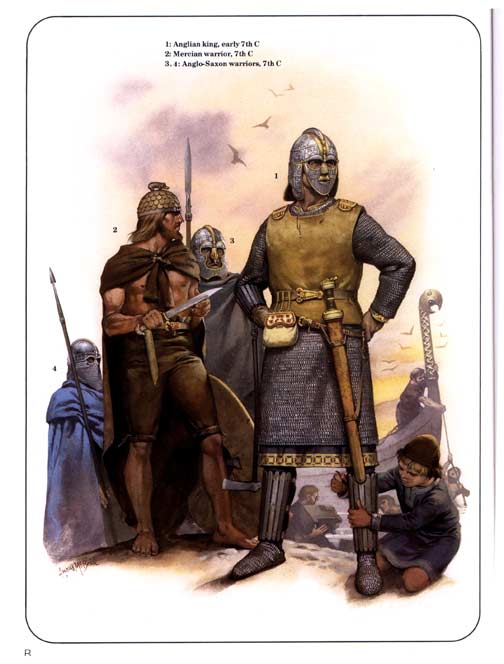
Prince Oswiu of Bernicia returns from exile in Ireland having previously married an Irish princess called Fin.
The Isle of Man is no longer ruled by Bernicia.
634 AD British king Llywarch Hen (the Old) dies, aged around 70, the last king of South Rheged who had fled to Powys in Wales 21 years earlier.
King Cadwallon of Gwynedd is defeated and dies in the battle of Heavenfield, fought between a Northumbrian German Angle Army under King Oswald and a British (Welsh) Army under King Cadwallon, 4 miles North of Hexham on Hadrian's Wall.
|
Chronology of Kings of Rheged/Cumbria |
|||||
| Name |
Born |
Ruled |
Kingdom |
Died |
Children/Comments |
| Coel Hen (Caelius Votepacus) | c.350 | -420 | Northern Britain, Duke of Britain | 420 | Upon his death 13 petty kingdoms established, given to his descendants. One son Cenue ap Coel Hen another called Gorbanian, does that mean there were 11 more? |
| Sons of Coel Hen, but who? What about Ambrosius or Abrosius's brother Uther Pendragon as a possible fit? | b.420 | 420- | ? | ||
| Ambrosius | c.414 | c.458-479 | ? | c.479 | "The Great King amongst the Kings of Britain" |
| Uther Pendragon | c.420 | 479-495 | 495 | ||
| Cenue ap Coel (Hen) | c.375 | -470 | c.470 | ||
| Gwrast Ledlwm (The Ragged) | 422 | c.470-c.475 | Greater Rheged | c.475 | Meirchion Gul (The Lean)oldest son/Masgwid (Mascuid) Gloff (younger son granted Elmet) |
| Meirchion Gul(The Lean) | c.455 | 475-535 | Greater Rheged | 535 | Cynfarch Oer/Elydyr Llandewyn (the Stout & Handsome)/Gorlois of Tintagel |
| Cynfarch Oer (The Dismal) | c.520 | 535-570 | North Rheged | 570 | Urien Rheged |
| Urien Rheged | c.540 | 570-590 | North Rheged | 590 | Eldest son Owain Rheged. Daughter Morfydd (possible twin of Owain). Son Pasgen. Blue denotes decendant of Urien Rheged |
| Owain Rheged | c.560 | 590-597 | North Rheged | 597 | St.Kentigern (d.614) Oldest son Elfin/ Youngest son Rhun |
| Elfin map Owain | c.576-c.580 | 597-616 | North Rheged | 616 | Last King of North Rheged before German Angle conquest of area |
| Rhun map Owain | before 597 | 616?-630 | Occupied North Rheged? | Rhun baptises Edwin and 12,000 followers c.617. Son Royth. | |
| Royth map Rhun | 630-634? | Rheged dominated by Northumbria | Daughter Princess Reinmelt born in Caer Lugas (Carlisle) | ||
| Princess Reinmelt | c.600 | 641 | Marries Prince Oswiu of Bernicia in c.634 (his 2nd wife) uniting British Rheged with German Angle Northumbria. Eahlfrith (Alhfrith)her son and Eahlflaed (Alchflaeda) her daughter but dies in childbirth (daughter later married Peada brother of Cyneburh, children of Pendle) | ||
| Eahlfrith (Alhfrith) | c.635 | c.655-664 | Sub King of Deira (Part of Northumbria) | married King Pendle of Mercia's daughter Cyneburh c.650. Disappears from records from 664 and Synod of Whitby until 685. Children: Osred (King Osred of Northumbria) St. Cuneburga of Gloucester, St. Edburga of Gloucester, St. Weeda of Gloucester, St. Eva of Gloucester and the extraordinary baby St. Rumwold born 662 died 662. | |
| Ecgfrith son of Oswiu | 670-685 | Northumbria | Died in battle | ||
| Aldfrith son of Oswiu (same as Alhfrith?) | 685-705 | Northumbria | Eldest son Osred, yoinger son Osric | ||
| Osred | c.697 | 705-716 | Northumbria | ||
| Coenred | 716-718 | Northumbria | Descendant of Ida the flamebearer | ||
| Osric | c.700 | 718-729 | Northumbria | End of Urien Rheged's line in the North. Possible alternative line of descent continued through his son Pasgen in Wales. | |
| Ceolwulf | 729-737 | Northumbria | Brother of Coenred and adopted as heir by Osric. | ||
| Elidyr Llydanwyn (The Stout & Handsome) | b.535 | 535-560 | South Rheged | 560 | Llywarch Hen (The Old) |
| Llywarch Hen (The Old) | b.560 | 560-613 | South Rheged | 634 | South Rheged overrun in 613 flees to Powys and dies there in 634. He would have been at least 74 from ruling in 560 to death in 634! if he ruled from lets say age of 16 then he would have been at least 90! |
| Owen (Owain) Caesarius | b.902 | 918-937 | Cumbria | 937 | Son of King Aed of the Picts |
| King Dunmail (Dyfnwal III) | b.920 | 937-945 | Cumbria | 945 or 975 | Son of Owen Caesarius |
| Máel Coluim (Malcolm I), king of Strathclyde | b.930 | 945-954 | Strathclyde & Cumbria | 954 | Son of Dunmail |
| King Dunmail (Dyfnwal III)????? | b.920 | 954-973 | 975 in Rome | 5 sons - Malcolm I, two blinded, Amdarch and Eogen | |
| Malcolm II (or Amdarch son of Dunmail?) | b.955 | 973-997 | Cumbria | 997 | |
| King Eogan (Owen II/Eoghain II) | b.975 | 997-1018 | Cumbria | 1018 killed in the battle of Carham | Owen/Owain the Bald a 5th son of king Dunmail |
|
Legend of Arthur characters with Rheged/Cumbria/Northern Britain connections |
|||||
|
Name |
Born |
Ruled |
Kingdom/Ruler |
Died |
Children/Comments |
| Ambrosius | c.414 | c.458-479 | 479 | Artorius/Brother Uther Pendragon? | |
| Uther Pendragon | c.420 | 479-495 | 495 | Arthur Pendragon | |
| Arthur Pendragon
(King/Warrior Arthur of Legend) |
c.480 | 495-537 | 537 | Arthus was born and lived at Tintagel until he was 15. Amr step-son of Arthur killed by him. Llachau mentioned in Welsh Triads. | |
| Gorlois of Tintagel | b.440 | c.458-479 | Tintagel, Duke of Cornwall | 479 | Gorlois is the 3rd son of a King of Greater Rheged. In c.458 Gorlois, Uther and Ambrosius defeat and kill Vortigern |
| Arturus | Son of Aiden | ||||

c.634/c.638 Rheged was incorporated peacefully into Bernicia, through the marriage of British Rhegedian Princess Riemmeltt (Rienmelth daughter of Royth, son of Rhun) born c.600 AD, heiress of Rheged, to German Angle Prince (later King) Oswiu of Northumbria after his first wife had died.
British Queen Riemmeltt (of Rheged) bore two children Eahlfrith (Alhfrith) her son c. 635 and Eahlflaed (Alchflaeda) her daughter.
642 Oswiu (Oswy) becomes German Angle king of Bernicia following the death of his brother King Oswald of Northumbria at the hand of the powerful rival German king Pendle of the Anglia Mercians (Anglo-Saxons) and Oswiu strengthens his own position by now marrying Edwin's exiled daughter Eanflaed (his 3rd wife.
Deira is ruled separately by King Oswin of Deira as Oswiu is deemed unacceptable to them being only a half-brother of their previous King.
c.650 German/British Prince Eahlfrith (Alhfrith), son of British Queen Riemmeltt of Northumbria, marries German Angle Princess Cyneburh (Cuneberga) of Mercia (daughter of King Pendle) in an attempt to forge an alliance between these warring German factions through marriage. Prince Eahlfrith would have been around 15 years old.
651 King Oswin of Deira murdered, by King Oswiu Of Bernicia after Oswin refuses to take part in armed conflict, and is succeeded by king Aethelwald of Deira
c.652 German/British Princess Eahlflaed (Alchflaeda), daughter of British Queen Riemmeltt of Northumbria, married German Prince Peada, brother of Cyneburh, son of King Pendle of Mercia.
Despite the marriage of two sons and two daughters of both German Angle King Oswiu of Bernicia/Deira and German King Penda of Mercia to each other, war was never far away.
655 King Pendle of Mercia attacked Bernicia with a much larger army, but was surprisingly defeated and killed at the Battle of the Winwaed River on 15th November. This battle is believed to have taken place at Cock Beck, near Leeds and it left Oswiu as King of Bernicia, Deira (Now merged as Northumberland) and defeated Mercia. Prince Eahlfrith (Alhfrith) had fought at this battle where his father-in-law was killed.
Prince Eahlfrith (Alhfrith) appointed sub-King of Deira by his father King Oswiu, as apparently king Aethelwald of Deira had withdrawn his forces to await the outcome of the battle and was replaced!
656 King Peada of Middle Anglia (Leicestershire) murdered at Easter through the treachery of his wife Queen Eahlflaed (Alchflaeda)!
Northumbria now rule Mercia!
658 Mercia rebel and regain independence.
664 Synod of Whitby. Sub king Eahlfrith (Aldfrith) religious opposition to his father King Oswiu, fails. Aldfrith possibly leaves in exile to Hebridean island of Iona according to one account another suggests he dies?
Plague/Pestilance recorded in Northumbria, Southern Britain and Ireland.
665 The Second battle of Badon Hill. A Saxon (Angle?) victory against the Britons of Gwent. I can't find any reference to who fought at this battle, which is unusual.
670 Angle King Oswiu (Oswy) of Northumberland dies, succeeded by his son King Ecgfrith (Egfrid).
The Bewcastle cross South side inscription reads "In the first year of the reign of Egfrid King of this Kingdom" and the cross itself West side inscription reads "This slender pillar Hwætred, Wæthgar, and Alwfwold set up in memory of Alefrid, a king and son of Oswy. Pray for them, their sins, their souls". This tells us that the cross was likely carved after 670/704 and that Alefrid was dead by this time. I believe that Alefrid is the same person as Alhfrith (Ealfrith) of Deira?
679 Sub king Alfwine of Deira (brother of King Ecgfrith (Egfrid) of Bernicia killed at the battle of the Trent against Mercian forces.
685 Pict Army major victory at the battle of Dun Nechtain defeats Angle Northumbrian Army and kills King Ecgfrith of Northumberland, the successor of King Oswiu. The Pictish frontier returned to the river Forth at Edinburgh.
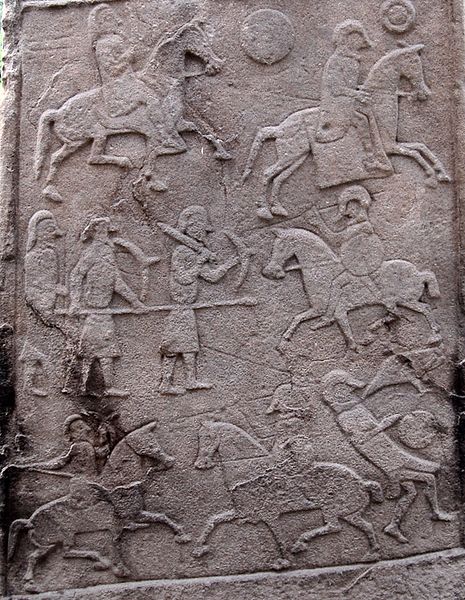
Northumberland now ruled by Oswiu's other son Aldfrith (Alhfrith). Called back from exile in Iona an illegitimate son of Oswiu.
In 685 Saint Cuthbert (Bishop of Lindisfarne) visits Carlisle and is granted Carlisle and all land and inhabitants in a 15 mile radius.
704 King Aldfrith (Ealdferth) of Northumbria dies. Usurper Eadwulf seized the thrown for a few months and was soon overthrown. Aldfrith's young son Osred (8 years old) was only a child and became King with control of the government by Bishop Wilfred.
711 Picts suffer a major defeat by Northumbria Angles in the area round the upper Forth.
716 King Osred of Northumbria is slain, possibly murdered by his successor Coenred, a descendant of Ida the flamebearer.
718 Osric younger son of Aldfrith succeeds Coenred
729 King Osric slain, the last Northern based descendant of Urien Rheged (Weslh line may have continued through Urien's son Pasgen). Ceolwulf succeeded.
c.731 Ad Gefrin (Yeavering Bell) palace abandoned.
738 Eadbury succeeds to Northumbrian throne.
744 the Picts defeat the formidable Army of the 'Britons of Strathclyde'
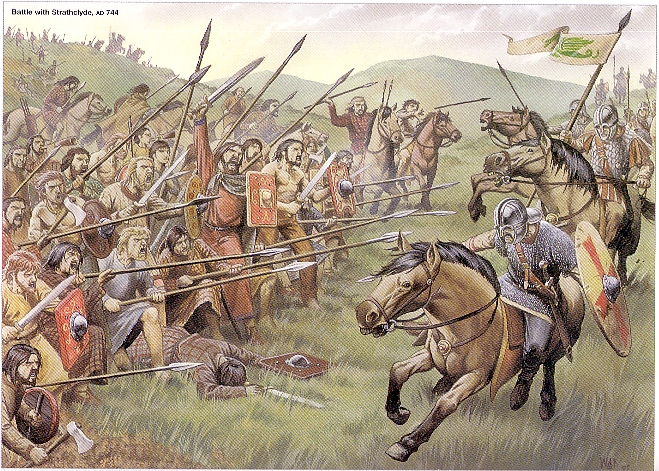

793 Lindisfarne raided by Vikings. Lands East of the Pennines, were seized by Danish Viking invaders that settled there.

Map of British isles circa 802. N.B. Cumbria and Galloway together now form the the Norse controlled Kingdom of Strathclyde. (Galloway and Cumbria)
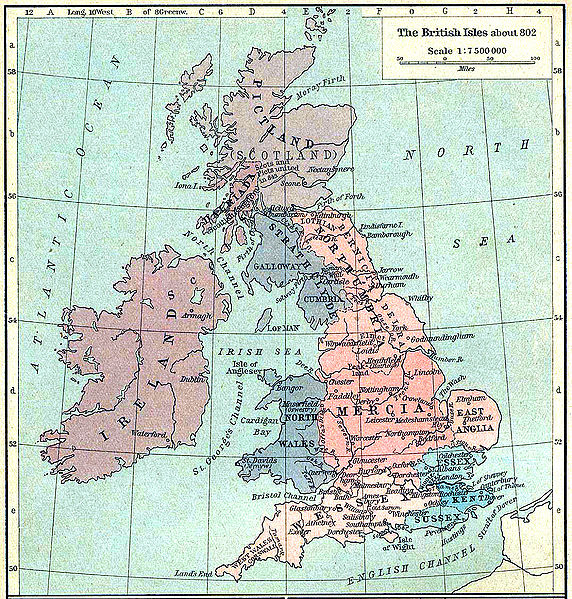
c.815-c.832 Battle of Athelstaneford in Lothian when an Army of Picts under King Angus invaded the Lothians (then under control of Northumbria) and found itself surrounded by a larger Saxon Army under King Athelstan. Fearing the outcome King Angus led prayers for deliverance and was rewarded by seeing a cloud formation of a white Saltire against the blue sky, he vowed that if he gained victory St.Andrew would become the patron saint. The Picts did win, Athelstan was killed, and the Saltire eventually became the flag of Scotland.
C.843 Kenneth I first joint king of 'Scoti' Dalreada and the Picts to form Scotland North of a line between the Clyde and the Forth rivers.
845 The ship of Viking King Ragnar Lothbrok of Sjaelland & Uppsala (Scandinavia) is supposedly blown off course and he lands in East Anglia. He is entertained at the Royal Court but internal politics leads to him being kidnapped and smuggled into Northumbria where he is executed in a pit of vipers.
865 The 'Great Heathen Army' of Vikings, led by Princes Ivarr the Boneless and Halfdan Wide-Embrace of Sjaelland & Uppsala (Scandinavia), invades East Anglia (supposedly in revenge for the execution of their father, King Ragnar Lothbrok). King Edmund of East Anglia buys peace with a supply of horses.
866 Vikings capture York
867 Danish Vikings capture Angle King Aelle of Northumbria and 'spread Eagle' him in revenge. Deira captured.
870 Most Anglo-Saxon kingdoms had fallen to the Danish Vikings (not including Cumbria or Bernicia), with the exception of English Wessex under King Alfred the Great.
873 Danish Viking campaign against Norwegian Vikings in Dublin failed.
c.875 Parts of Bernicia captured by the Danish Vikings.
c.877 Carlisle attacked and destroyed by Danish Viking Halfdan, who ransacked the area, having travelled over Stainmore Pass. [The damage was so bad that it allegedly took 200 years to recover. Penrith may have become the Capital of Cumbria during this time.]
878 Establishment of Danelaw [see map, yellow area under Danelaw] after Danish Viking defeats by Alfred the Great of Wessex.
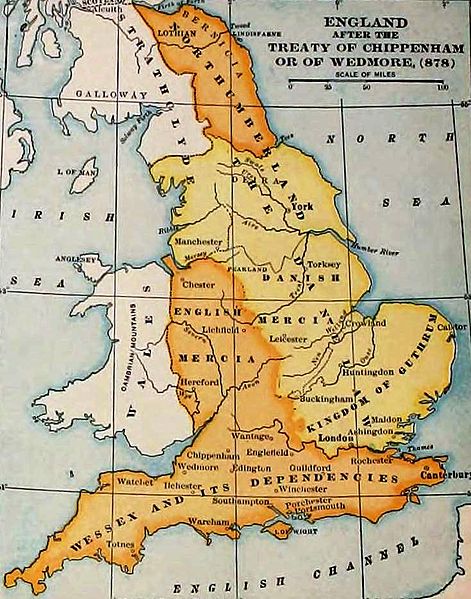
901 Edward the Elder, king of Wessex and son of King Alfred the Great, "reduced to subjection the king of the Scots, the Cumbrians, and the Strathclyde and Western Britons". [I don't know who was king of the Cumbrians at this time, but possibly the father of the later to be king Owen (Owain) Caesarius. King Aed of the Picts?]
918 Native Irish expel 'Norwegian Vikings' from Dublin (King Olaf?), some of the Norwegian Vikings crossed the Irish Sea and settled peacefully in Cumbria having being welcomed as allies against the 'Danish Vikings'.
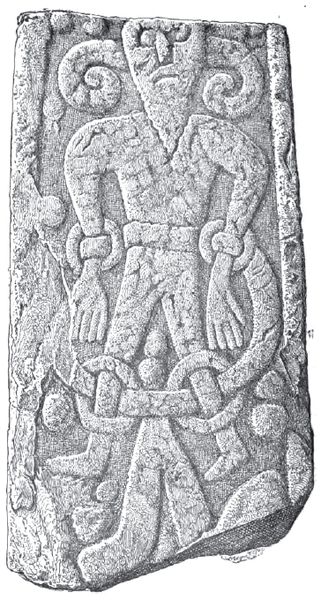
Loki stone from Kirby Stephen, near Penrith, 10th Century Viking carving
918 Cumbrians voluntarily elect a 'brother of the Scottish King' to their own throne. Identity unknown is it Owen Caesarius??? [Ref: 1869 book Arthurian localities, page 26] Believed that Owen Caesarius is the brother of Constantine, King of Strathclyde their father being Aed King of the Picts. King Owen (Owain) Caesarius (Eogan I) succeeded as king of Cumbria.
924 Edward the Elder died, he had been the Wessex king for 23 years.
c.925 Norwegian Vikings continue to settle peacefully in Cumberland, having originally emigrated from Ireland. [Estimated now that 20% of Cumbria population was Norwegian Viking]
[Many
residents of Penrith have been found recently
in 2000 to
still have
Norwegian Viking DNA, (from Norway), other tests on the
population elsewhere in
12 July 927, At Eamoton (modern Eamont Bridge, just outside Penrith) was the scene of a gathering of the 5 kings from throughout Britain as recorded in the Anglo-Saxon Chronicle and the histories of William of Malmesbury and John of Worcester. Present were AEthelstan (British King of Wessex), Constantín mac Áeda (King of Scotland), Owain of Strathclyde (King of Strathclyde & Cumbria), Hywel Dda (King of Wales), and Ealdred son of Eadulf (King of Northumbria).
This is generally seen as the date of the foundation of the Kingdom of England.

c.930 Penrith Viking Hoard buried, artefacts from which were later found in 1785, 1830 and 2009. This is now known as the 'Penrith Hoard'.

937 Some history books suggest that King Owen Caesarius (Owen I) of the Cumbrians was killed in 937 AD by the English King AEthelstan of Wessex at the major Battle of Brunanburgh, where 5 Kings in total were supposed killed. There had been an alliance of Scots, Celts, Danes & Vikings. (Burnley on the river Brun?)
However Scottish annals from Anglo-Saxon Chronicles differ with a quotation from Symeon of Durham 'In the year 937 King Ethelstan fought at Wendun and turned to flight King Olaf with six hundred and fifteen ships, Constantine King of the Scots and the King of the Cumbrians, with all their host.' i.e. King Owen Caesarius survived the battle and fled.
[I think it is a possible scenario that King Owen Caesarius survived the battle initially and fled, but had been wounded and died soon after the battle, allowing time for travel and his body to be buried ultimately at Penrith. When the Giant's Grave was excavated in the 16th Century a large skeleton was found (Owen was apparently a man of gigantic stature according to scripts) buried with a 'Broad sword', which surely would have been taken as a war trophy had he died on the battlefield? Also if killed at the battle site I don't think his body would have made it back to Penrith, given that his army was routed.]
Owen (Owain) Caesarius, King of Cumbria from 920 AD to 937 AD, believed buried at Penrith in the Giant's Grave.


Castle Hewin (Owain's Castle) was located close to High Hesket, 9 miles North West of Penrith on the shore of Tarn Wadling. [A description of which reads 'the remains of a very strong building are 233ft by 147ft beside a small one at one corner 49ft sq. The foundations still appear faced with large stones of ashlar work, in some places 8ft in thickness'.]
[Another description reads "Near to it is Tarn Wadling, a lake of 100 acres, which breeds some of the finest carp in the kingdom, and borders upon a declivity that rises 600 feet above the Eden. There were some years ago, on the crown of the lofty eminence on the north east side of the lake, the remains of a very strong and ancient building, 233 feet by 147, called Castle Hewin, but no traces of it are now left. Tradition says it was one of the strongholds of Ewaine, king of Cumberland."] From the book 'Beauties of England & Wales or deliniations 1802'
[Older name Ternewathelan c.1314]

937 King Dunmail (Dyfnwal III) succeeded, upon the death of his father Owen/Owain Caesarius (Aed's son, so brother of Constantine), as the King of the Cumbrians.
940 A battle victory recorded for Edmund over Constantine mac Aeda, the 'Strathclyde' Britons and a Dublin Viking called Olaf Cuaran.
c.941 King Dunmail of Cumbria visited by Cathroe of Metz
943 Constantine abdicated his throne as King of Alba, handing power to the son of his nephew - Malcolm I, son of King Dunmail (Donald)????//
945 'almost' the last British King of the Cumbrians King Dunmail (Domnall m. Eogain, rí Bretan) lost the battle, at what is called now Dunmail Raise, near Grasmere to the Anglo Saxon King Edmund ‘The Magnificent’ of Northumbria.
Two sons of King Dunmail were deliberately blinded by Edmund and Cumbria was granted to another son Máel Coluim (Malcolm I), king of Strathclyde (Dunmail was a relative of Constantín mac Áeda who had fought on the side of Dunmail's father Owen Caesarius) in return for his future alliance.
Two variations of what happened to King Dunmail at this battle exist. One local tale says King Dunmail was killed and his crown thrown into a nearby tarn above the battlefield and that a mound of cobbles at the top of Dunmail Raise marks his burial site. Another more historically accurate version has it that King Dunmail survived and eventually went on a pilgrimage to Rome, dying there and that the mound of stones at Dunmail Raise were placed there by his warriors prior to the battle in the belief that if they survived they would take them back. However there are thousands of stones, probably more in number than his Army could possibly have been?
946 King Edmund dies
948 King Malcolm I invades England and plunders as far as the Tees
952 Former King Constantine dies
954 Malcolm son of Dunmail slain after
reigning for 11 years (source Irish Annals) 'And
the men of Mearns slew Malcolm in Fetteresso ; that
is, in Claideom' [where is this?] Buried on the island of Iona
Indulf, Constantine's son succeeds as King of Strathclyde
962 Indulf killed by Danish Vikings at Inver-Cullen, at the mouth of the river Cullen, and buried on the island of Iona
Dub, Malcolm's son becomes King of Strathclyde
966 Thored, Gunner's son, ravaged Westmoreland
967 King Dub of Strathclyde killed by Scots in Forres and buried on the island of Iona
King Cuilén of Alba Indulf's son and Kenneth jointly rule the Scots?

971 Amdarch, believed a son of King Dunmail kills King Cuilén of Alba in revenge for the kidnap and rape of his daughter. Amdarch is never described as a king himself. Cuilen described as killed by Britons.
973 'Malcolm II, (Dub's son/or Dunmails or Kenneths?)' is king of the Cumbrians, (believed his brother was Amdarch and father had been King Dunmail). King Malcolm and King Dunmail met King Edgar of Wessex at a formal ceremony on the River Dee at Chester to swear continued allegiance.
975 Veteran king Dunmail leaves Cumbria to embark on a spiritual journey to Rome. There he became a monk. He died that year, his son Malcolm I reigns for a further 22 years as King of the Cumbrians.
987 'King Malcolm' is referred to as an 'under-king', king of the Cumbrians in the Anglo-Saxon Chronicles.
989 Heimskringla, Olaf Tryggvi's son's plundered Cumberland
c.995 King Kenneth II of the Scots is killed by his subjects. King Constantine III usurps and becomes king of the Scots
997 'Malcolm of Cumbria' dies and is succeeded by his brother King Eogan (Owen II/Eoghain II) (Owen/Owain the Bald a 5th son of king Dunmail)
1000 "King Ethelred II (son of Edgar) entered Cumberland, the chief abode of the Danes, and destroyed it all, and the hostile fleet". [There is a reference to a Danish colony in Breiland?]
1002 King Ethelred II ordered the massacre of all Danes in England to eliminate potential treachery.
1004 Kenneth's son Malcolm II crowned king of the Scots
1016 Edmund crowned
1018 a Comet appeared for 30 nights. King Eogan (Owen II) (Owen the Bald) is recorded as being 'King of Strathclyde' present at the Battle of Carham with 'Malcolm son of Cyneth, king of Scots' (Malcolm II) and their victory over the Northumbrians . However, it is believed that Owen the Bald died in this battle.
Duncan I (grandson of Malcolm II and great grandson of Cináed mac Maíl Coluim (Kenneth II)) is installed in Carlisle as 'King of Cumbria 'Strathclyde')
1021 Nennius writes 'The history of the Britons'
1034 Malcolm II High King of Scotland dies???/
1040 Duncan I was killed at the hands of the famous Macbeth, King of Scotland from 1040-1057. Scottish occupation of Cumbria begins.

1054 An English invasion led by Siward, Earl of Northumbria (a Scandinavian Viking by birth) had as its goal the installation of Máel Coluim, (Malcolm III, eldest son of Duncan I) "son of the King of the Cumbrians".
It appears that Siward temporarily succeeded and brought Cumberland, back under Northumbrian lordship. The evidence comes from a document known as "Gospatric's Writ". This is a written instruction, issued either by the future Gospatric, Earl of Northumbria or Gospatric, son of Earl Uhtred) that was addressed to all Gospatric's kindred and to the notables dwelling in the "all the lands that were Cumbrian" (on eallun þam landann þeo Cōmbres); it ordered that one Thorfinn mac Thore be free in all things in Allerdale, and that no man is to break the peace which was given by Gospatric and Earl Siward.
After Macbeth had been forced to relenquish Cumbria and Siward had appointed Máel Coluim, (Malcolm III, eldest son of Duncan I), as King of Cumbria, shortly after Siward eventually departed, Macbeth returned and recaptured Cumbria until Macbeth was killed by Malcolm III in 1057.
Macbeth's stepson Lulach was King of Scots and Cumbria from 1057-1058 when he was assassinated by King Malcolm III the eldest son of Duncan I, who became King of Scots and Cumbria from 1058-1092.
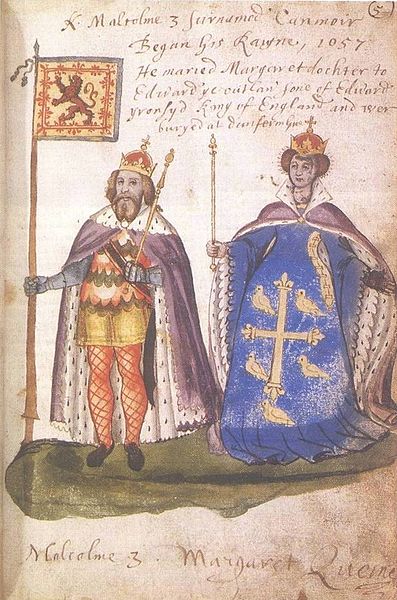

1066 Southern England was invaded and conquered by the Norman William the Conqueror. The last Saxon King of England Harold Godwinsson killed.
1069 King William's position seemed weak with invading Danish armies and Malcolm III of Scotland decided on war and took his Army South into Cumbria and across the Pennines attacking Northumbria.
1070 Cumberland was stated in the Anglo-Saxon chronicles as being "under the 'dominion' of Malcolm III, that is not possessed by right, but subdued by force."
1070 at the command of William of Conqueror, who was seeking reprisal, forces were sent to raid Scotland through Cumbria. Capturing great booty after much slaying and burning. This is known as the Norman Harrying of the North and was a 'scorched earth' policy, with over 100,000 killed in Northern England either directly or through famine that winter, so bad that even Cannabalism was resorted to by survivors. (Chronicles of Florence of Worcester p.174)
King Malcolm III gazed upon the burning church of St.Peter (in York? York Minster?) and heard what William's men had done to his subjects, raged and ordered all English to be slain or enslaved. Old men and women were beheaded by swords, babies were tossed high in the air and caught on spears thrust closely together in the ground. Youths and girls were taken as slaves to Scotland.
1072 William of Normandy mounted an expedition into Scotland and 'reduced it under his own dominion' so much that Malcolm III gave him homage and declared peace.
1079 Malcolm III ravaged Northumbria again.
1086 Norman Domesday Book survey, Cumberland is not included as it wasn't under their control at this time.

1092 Carlisle is captured from Scotland by King William Rufus, son of William the Conqueror and Cumbria is incorporated back into England. Flemish settlers and land holders from Lincolnshire encouraged into areas near Carlisle i.e. Flimby (Flemingby). Local Norman Baronies established including Greystoke. Dolfin Lord of Carlisle and son of Gospatric is expelled. First Norman ruler of Cumbria is Ivo Taillebois.
1093 Construction of Carlisle Castle, Norman Motte & Bailey design begins. Base for Norman (French) soldiers and too difficult for locals to overcome. Malcolm III invades Northumbria again.
King Donald III (son of Malcolm III) succeeds to Scottish throne following the death of his older brother Malcolm III and Malcolm's son Edward in Northumbria at the Battle of Alnwick
c.1130 Cumbria granted to Scotland by English King Henry III
1133 Original St.Andrews Church established in Penrith. [Present day church building built in 1720, older tower is original from 12th or 13th century]
1167 The earliest surviving reference to modern Penrith is in the pipe rolls of 1167 for 'Penred Regis'
1250 Map of Britain
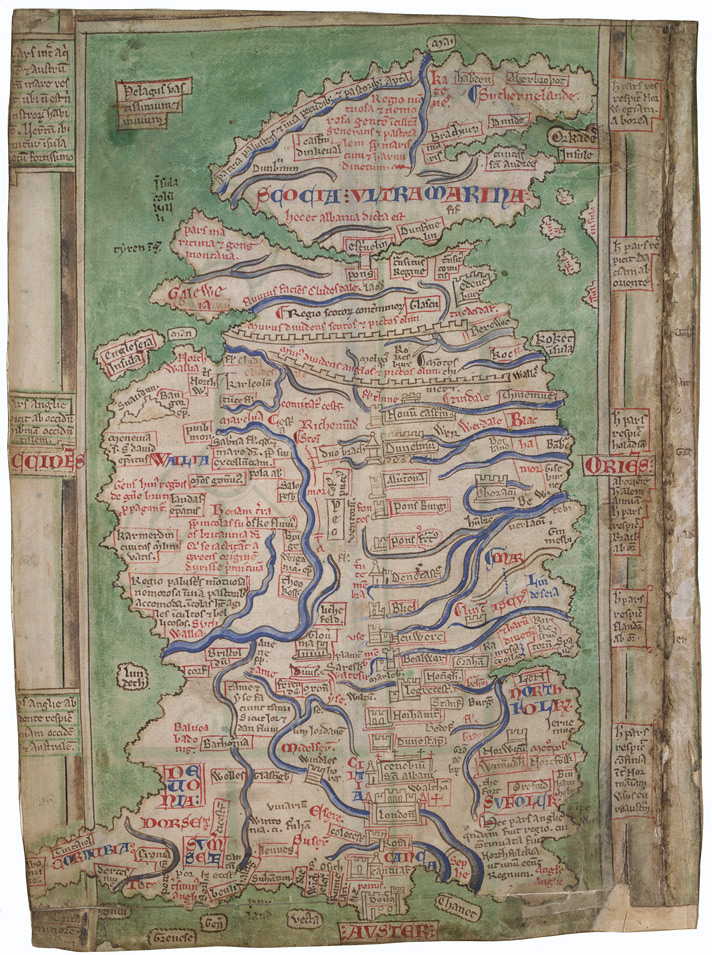
1272 Hutton Hall Pele Tower built in Penrith, still standing today 2013.
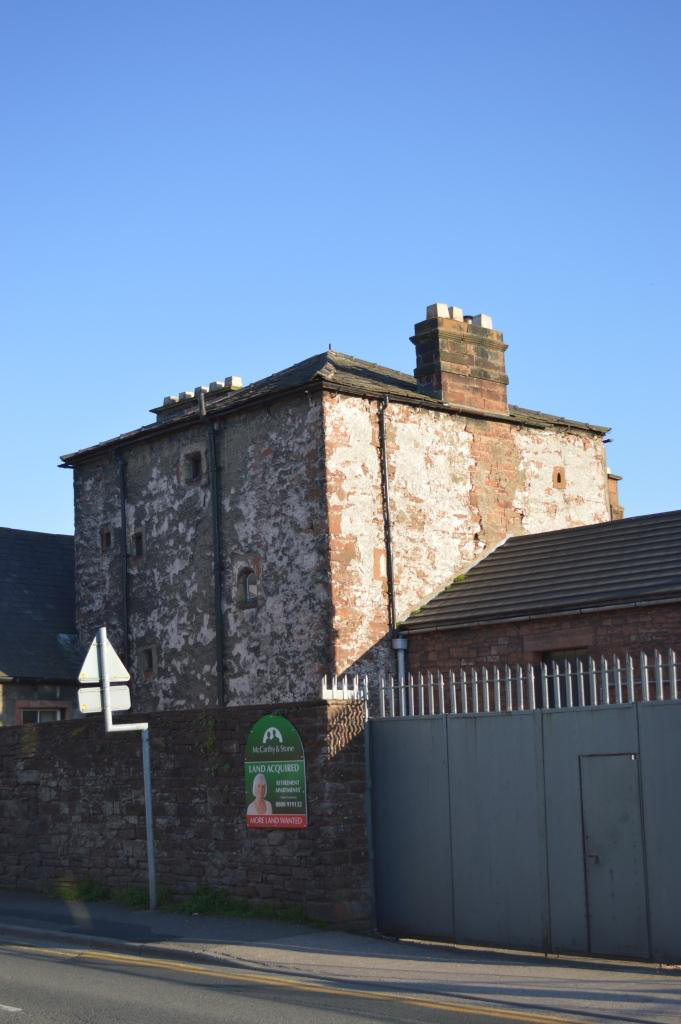
Hutton Hall Pele Tower, Penrith in May 2013. A Grade II listed building. Probably the oldest surviving building in the town, predating the castle. Note the extremely small original windows and the much later additions of chimneys. Also the white lime wash, roof not original.
1290 Records showing place name 'Penreth' (Modern name Penrith)
1295 Cumbria re-established as part of England
1296 Fire Beacon on Penrith Fell, now called Beacon Hill. [First known year of beacon use at this location above modern Penrith, then called Penreath]
1297 Large Scottish raid, looting, pillaging, raping and bloodshed. Children pierced with spears etc.
1307 Brougham Hall near Penrith is crenulated (given permission to fortify)
1314 Edward Bruce brother of the Scottish 'Robert the Bruce' invaded the Eden Valley with an army and burned Penrith.
Edward Bruce stayed three days at the Carlisle bishop's house at Rose, while he sent the greater part of his army to burn all the surrounding towns and churches, take captives, and lead away the cattle they should find in the Forest of Inglewood and its neighbourhood.
They struck no blow at Carlisle, because it was so well manned. They must have emptied the bishop's fish- ponds and driven away his deer in their course, for in 1319 Edward II. gave an order for him to have fifty pickerels from the king's lake of Ternewathelan, in the Forest of Inglewood, for stocking the fishponds at La Rose, and to have twelve hinds and twelve does from that forest for stocking his park there, as these had been destroyed by the Scots.
1315 Carlisle surrounded for 10 days, but Scots repulsed.
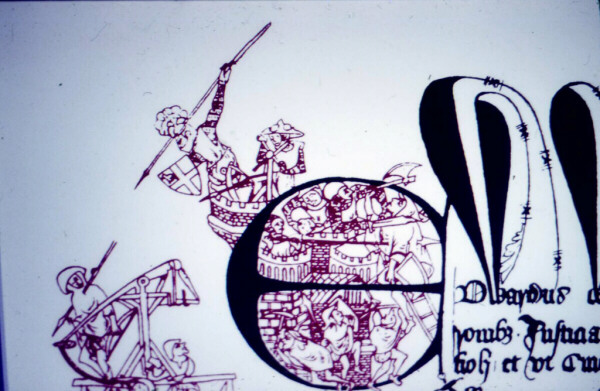
The drawing illustrates Sir Andrew de Harcla's defence of Carlisle in 1315.
Sir Andrew de Harcla's Defence of the City as told by the Lanercost Chronicle.
A. D. 1315. Shortly afterwards also in the same year, on the feast of St. Mary Magdalen, came the King of Scotland towards Carlisle, having assembled all his forces, and surrounding the city for ten days, he besieged it, treading down all the corn, and wasting the suburbs and every thing round about, and burning the whole country; and carrying off with his army a very great booty of cattle from Allerdale, Copeland, and Westmorland. Moreover, on every day of the siege, they made an attack on some one of the three gates of the city, and sometimes on all three together; but not with impunity, for darts, arrows, and stones, as well then as at other times, were cast down upon them from the walls in so great abundance, that they questioned among themselves, whether the stones did not increase and multiply within the walls. But on the fifth day of the siege, they erected an engine for casting stones near the church of the Holy Trinity, where their King had placed himself, and continually threw great stones towards the Caldew gate, and at the wall, but did no injury, or but little to those within, except that they killed one man. There were, indeed, within the city, seven or eight similar engines, with other warlike instruments, called Springaldes, for throwing long darts; and slings in sticks for casting stones which greatly terrified and annoyed those who were without the city. In the meanwhile, the Scots erected a great berefray, in the manner of a tower, the height of which considerably exceeded that of the walls; which being observed, the carpenters of the city erected a wooden tower, which exceeded the height of the other, upon one of the towers of the wall, towards which that engine must have come, if it had approached the wall; but it never drew near to the wall, for when it was drawn upon wheels over moist and clayey ground; there it stuck by reason of its weight, nor could it be drawn any further or occasion any inconvenience.
But the Scots applied many long ladders which they had brought with them, for the purpose of ascending the wall in the same manner in different places, and a sow for undermining the wall of the city, if they found it practicable; but neither the sow nor the ladders availed them any thing. They also made bundles of straw and grass in great abundance, to fill up the moat without the wall, on the east side, in order to pass over it dry; they also made long wooden bridges running on wheels, that being drawn forcibly and rapidly with cords, they might be carried across the ditch: but neither would the bundles, during the whole stay of the Scots there, fill up the moat, nor those bridges pass the ditch, but fell by their weight to the bottom.
On the ninth day of the siege, when all the engines were ready, they made a general assault on all the gates of the town, and attacked valiantly throughout the whole circuit of the wall, and the citizens defended themselves as valiantly; and in the like manner, on the following day. Moreover the Scots employed a stratagem similar to that by which they took the castle of Edinburgh; they caused the greater part of their army to make an assault on the eastern part of the city, against the place of the friars minors, that they might draw thither the party within; but the Lord James Douglas, a valiant and wary soldier, with certain of the more bold and alert of the army, posted themselves on the western side, over against the place of the canons and preaching friars, where, on account of the height [of the walls] and difficulty, an attack was not apprehended, and there erected long ladders which they ascended, and they had archers in great numbers, who discharged their arrows thickly, lest any one should raise his head above the wall: but, blessed be the Lord, they found such a resistance there, that they were thrown to the ground with their ladders, and there and elsewhere about the walls, some were taken, some slayn, and others wounded. Yet no Englishman was killed during the whole siege, except one man struck with an arrow, and the one above mentioned, but a few were wounded. Thereupon, on the eleventh day, that is to say, on the feast of St. Peter ad vincula, the Scots, either because they heard of the approach of the English to raise the siege, or because they despaired of making any further progress, early in the morning returned into their own land in confusion; leaving behind them all their warlike engines above mentioned. Certain English pursuing them, took John de Moray, who in the before-mentioned battle at Strivelin, had for his share 23 English knights besides esquires, and others of lower rank, and received a great sum for their ransom: they took also with the aforesaid John, the Lord Robert Bardolf, a man certainly of the very worst disposition towards the English, and brought them both to the castle of Carlisle.
1340 Bishop Strickland founds Grammar School in Penrith
c.1341 Mallerstang Castle (Pendragon Castle) burned down by Scottish raiders
1345 Penrith attacked by 30,000 Scottish raiders and burned. Many inhabitants carried off into slavery.
1362 Penrith (Penreth) named in grant made by Edward III, and subsequently confirmed by Richard II.:--
"For the men and tenants
of the manors of Penreth, Salkeld and Soureby.
"The King to all whom these presents may come greeting.
"The men and tenants of the manors of Penreth, Salkeld, and Soureby,
which are of the antient demesne of our crown, dwelling within our
Forest of Inglewood, have besought by their petition, before us and our
council in our present parliament exhibited, that, whereas they,
forasmuch as their lands and tenements, for which they are bound to pay
us a great farm, by our enemies of Scotland are frequently destroyed and
laid waste, as well as the corn there in these lands growing by our
beast of the forest aforesaid in like manner, so that they will be
unable to pay us the aforesaid farm unless assistance be afforded to
them, we being willing to grant to them in aid of their said farm, that
they should be able to have to them and their heirs for ever, common of
pasture for all animals in the aforesaid forest. We, considering the
premises, and forasmuch as it hath been testified before us in the same
parliament, that the same premises do contain contain the truth, being
willing to do special favour to the same men and tenants, have granted
to them for us and our heirs, that they and their heirs shall have and
hold common of pasture for all their animals, within the forest
aforesaid, for ever, as the Prior of Carlisle, and William English, and
other tenants within the forest aforesaid, do have common of pasture
there of the grant of us and our progenitors without hindrance
impediment of us or our heirs, our justices, foresters, or other our
bailiffs, and ministers of the forest whatsoever.
"Witness the King, at Westminster, the 26th day of October, 1362."
1380 Scots raid Cumberland, bypass Carlisle and attack Penrith carrying off loot and many prisoners.
1385 Penrith attacked by Scottish raiders and burned again. Most buildings still made from wood, very few stone buildings due to cost.

c.1397 Penrith castle construction began in 1397 or 1399 believed by Ralph de Neville, first Earl of Westmorland having been granted Penrith town and manor by King Richard II.
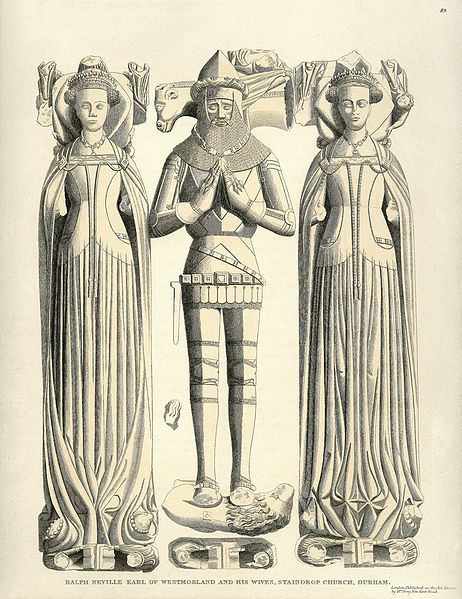
c.1400 Bishop William Strickland had a new fresh water course Thacka Beck artificially made running through Penrith from the River Petteril to the River Eamont. The amount of water permitted was that could be run through the eye of a mill stone.

1419 Bishop William Strickland dies.
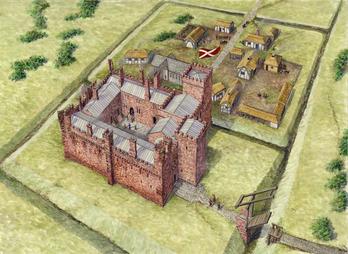
The castle depicted in about 1430 showing the buildings as they appeared after alterations made by Richard Neville, Earl of Salisbury. (Drawing by Roger Hutchins) Courtesy of English Heritage
[There continue to this day to be strong local rumours of a 'secret tunnel' leading from the Castle. I have found few written references apart from a book called 'The beauties of England and Wales, or Delineations' dated 1802, Volume 3, page 157 mentions 'an arched subterranean passage is reported to lead from the castle to the lower apartment of a house in the town called Dockwray Hall; a distance of 307 yards'. Another 1801 book says the passageway connected to the Hall's kitchen and was 307 yards long. This tunnel apparently running from Penrith Castle to what was until 2016 named the Gloucester Arms Pub, a c.1580 coaching inn (formerly Dock(w)ray Hall c. 1471 then a pele tower) in Great Dockray, Penrith.]
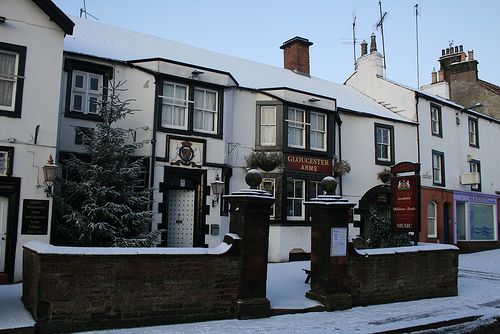
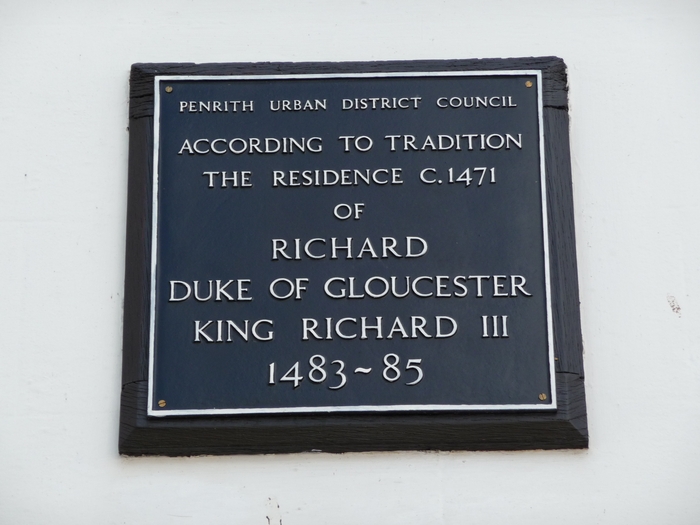
Apparently the 'secret tunnel' may run from the Hall kitchens/apartments, but has never been seen in at least the past 200 years, although I did read one relatively modern account providing a clue regarding 'Lancaster & Carlisle railway' line workers in the 19th Century sometime around 1846 "About 20 yards east of the castle wall was a hollow filled with water; a gavelock (iron bar) was struck through the bottom of it into an open space below. The water ran through the hole and disappeared."
Another local Penrith tale tells of a time when some ducks swimming at the castle moat disappeared down a hole in the ground and ended up in the kitchen cellar of Dockray Hall.
Apparently in the 1930's when the new Neville Avenue (between the Castle and Dockray Hall) was being built workers may have discovered the tunnel, but I can't find any pictures or newspaper articles of this.
In April 2016 a potential clue to the secret tunnel route and possible existence appeared when a section of the car park to the rear of Dockray Hall sunk about 20cm into the ground, the resulting depression being approximately 1.5m long and in line with the car park wall in the direction of the castle. This depression may be the roof of the tunnel beginning to collapse as at the bottom of the hill it is likely to not be far beneath ground level.
Looking at all these clues and using Google Earth satellite imagery found a visible depression East of the castle walls that might be the the railway workers referred to. Using the 307 yard length from the Castle to Dockray hall and lining up the new ground depression and this hollow, the possible path of the 'secret tunnel' shows it as not being simply the shortest straight line between the two but more of dog leg shape. See images below. However digging such a tunnel woudl have required considerable effort and at a depth below that of the moat, therefore the shortest path would have been from the Castle apartments to Dockray Hall, but this is much less than 307 yards, see castle plan.
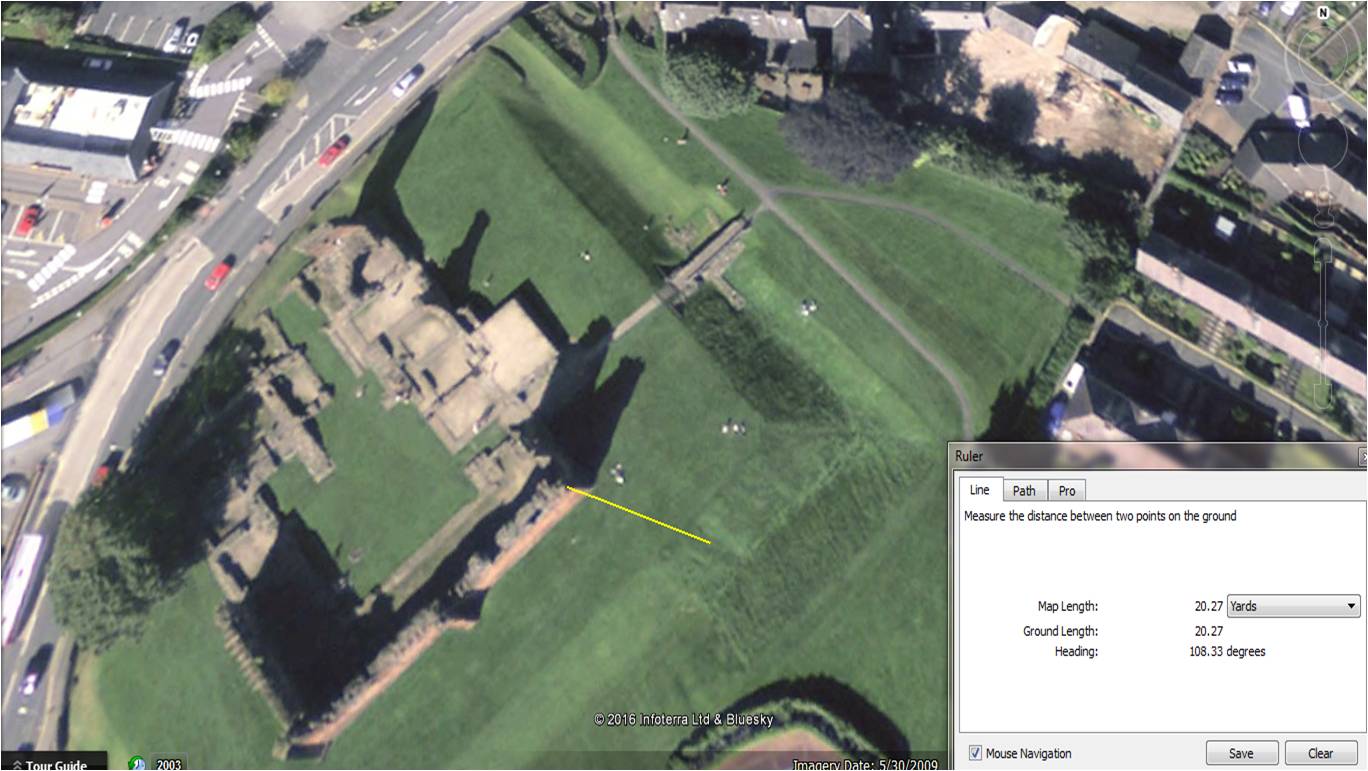
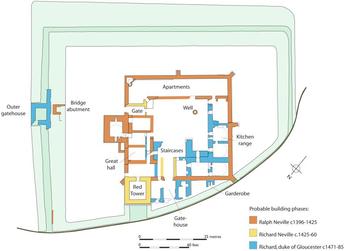
Plan of Penrith Castle showing location of apartments

This old Penrith map, shown below & date unknown, shows Penrith Castle with only fields between it and Dockray (Dockwray) Hall. This lends credibility to it being possible to have built a tunnel linking the two, with no buildings shown to obstruct the tunnel path. The castle plan below needs to be rotated 90 degrees clockwise to match the drawing with the satellite photo views.
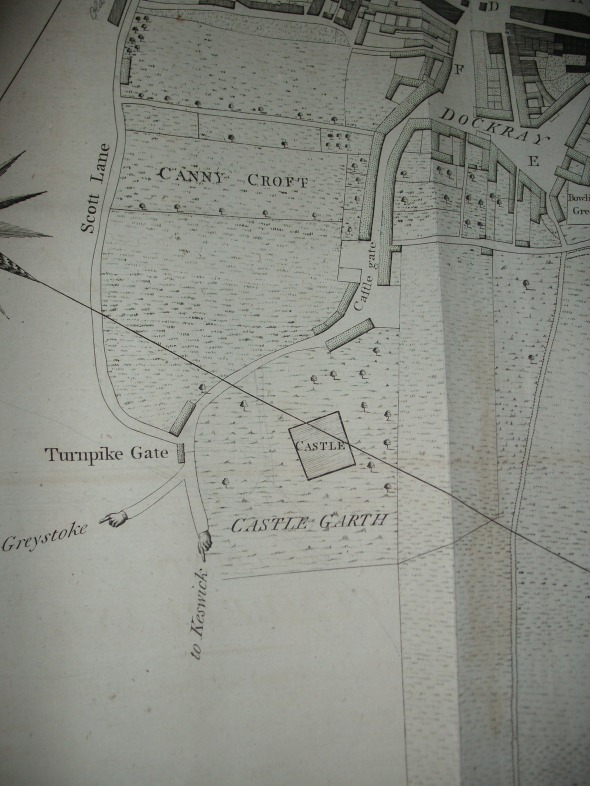
Old Penrith Map, courtesy of Emily Knox
I would have imagined that this tunnel would be no more than 2m beneath the top soil level i.e. it would have been simply constructed by digging a ditch and lined with stone, then soil and turfs replaced to hide it from view. Obviously locals would have seen this construction, so is that why rumours of its existence remain today including the tantalising precise description of an 'arched subterranean passage'?
The trickiest part would have been going underneath the Castle's dry moat, which is 6m deep, but that too could have been achieved using a stepped tunnel at the same depth beneath the top soil. In the Google satellite image there are clearly modern buildings built over the likely tunnel route (if it exists) that surely would have uncovered the tunnel when digging out foundations?
1468 Penrith beacon recorded as communicating with one at Kirkoswald. Could also link with Carlisle Castle High Tower to the North and Orton Scar to the South.
Penrith Castle was finished in around 1470 as a major defence against the Scottish raids. Prior to the castle being built with its later moat, there may have been a Pele tower on the same site.
King Richard III of England when he was the Duke of Gloucester between 1461-1483 apparently stayed at Dockray (Dockwray) Hall whilst 'castle alterations' were made, after he was given the castle in 1471, aged only 18 or 19. His coat-of-arms was much later carved into the stonework of the later built pub as a tribute to him having stayed there a Century earlier.
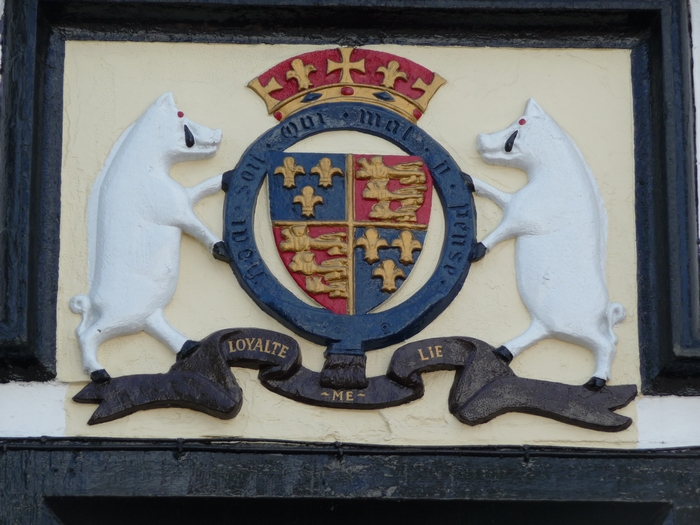
It is highly likely therefore that the secret underground passageway was created on the orders of Richard III a year after Penrith Castle completion in 1470, as a secret escape route, this was during the period known as the Wars of the Roses, fought between the Armies of the Houses of York and Lancaster. Richard III sometimes resided at Penrith Castle between 1471-1483 prior to being crowned King after the death of his brother. It was on the 14th July 1471 that he gained the Lordship of Penreth in Cumberland. His main residence being Middleham Castle in Wensleydale, Yorkshire.
In 2013 I found another account written in 1840 of this passageway/tunnel as 'There is the commencement of an arched subterranean passage at Dock-ray Hall which is supposed to lead to the castle'. [Does the word 'commencement' in this context suggest that the tunnel was started and not finished, or does it mean the entrance to a tunnel that was completed?]
I wish Tony Robinson and the Time Team would base themselves in the Gloucester Arms pub and uncover the secret passage. Interestingly I have found an 1892 account of Dockray Hall (earlier spelling was Dockwray Hall) saying that the portion of the then separate tenement, (with the inscribed 1580 date), originally contained the kitchens and apartments, so it looks like the secret passageway does run from underneath the current Gloucester Arms pub. The original Dockray Hall was apparently demolished in the mid 19th Century and no longer exists, but does appear on early 19th Century maps.
"Dockray Hall is closely associated with the castle, and probably existed prior to its being built, forming the residence of Ralph Nevill when he erected the castle. Similarly, we find, at a later period, a branch of the Lowther family resident at the "Two Lions Hotel," which is known to antiquarians as "Gerard Lowther's House," and a branch of the Musgrave family at Musgrave Hall. Uniform tradition has established a subterranean passage between Dockray Hall and the castle, but both the entrances have been lost sight of, though a place in the cellar wall, in the hotel, is pointed to as covering the entrance from that end. Many stories have been current as to this passage, and of these the last is that some ducks, belonging to the cottages, were lost at the castle, which turned up in the cellar of the hotel. Of course that was before the cellar entrance was built up. This passage, thus existing, was used for the purpose of receiving supplies, and also as a means of escape when danger threatened. The walls of the hotel bear testimony that it was not built for an ordinary residence, but as a place of strength, the walls being in some parts as far as nine feet thick."
King Richard III was killed aged 32 at the battle of Bosworth in 1485. His body has only recently been discovered in 2012 under a council car park in Leicester.
c.1485-1509 larger stones removed from Mayburgh Henge to repair Penrith castle.
1536 Martial Law declared in Cumberland by Henry VIII due to the Catholic clergy including Bishop of Carlisle rebelling and attempting to March to London to overthrow him. The north of England at once rose, and under the banners of St. Cuthbert and the Five Wounds marched south, with Robert Aske as their leader, in the Pilgrimage of Grace, " to go to London on pilgrimage to the king's Highness, and there to have all the vile blood of his Council put from him and all the noble blood set there again ; and also the faith of Christ and His laws to be kept, and full restitution to the Church of all wrongs done unto it."
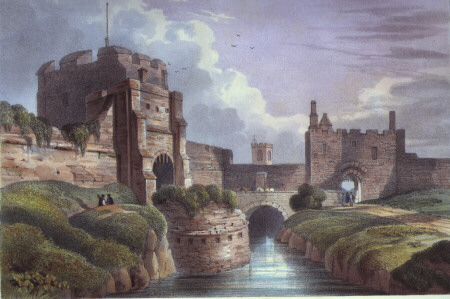
The punishments meted out to the lay rebels were far more severe, and more in keeping with the Tudor nature. Martial law was proclaimed in Cumberland, Westmorland, Durham, and North-west Yorkshire ; and Henry VIII. wrote to say that Clifford and Dacre were to cause "such dredful execution to be doon upon a good nombre of th' inhabitants of every toune, village, and hamlet, that have offended in this rebellion, as well by the hanging them up in trees, as by the quartering of them and the setting of their heddes and quarters in every toune, greate and small, and in all suche other places, as they may be a fearfull spectacle to all other hereafter, that would practice any like mater."
Dumfries in
Scotland was burned again by the English in 1536, and was then revenged by a
Lord Maxwell. That nobleman, with a small body of retainers, made an
incursion into England, and reduced Penrith to ashes.
1542 24th November, 1542 Battle of Solway Moss. A Scottish Army of 15,000-18,000 marched South towards England and were halted by an English Army of 3,000 at Solway Moss near Carlisle. The much greater Scottish Army was routed by the smaller English force.

1547 large quantities of stones were taken from Penrith castle to build a local prison [the prison referred to is the old lock-up near Lark Hall, Townhead]
1563 there were apparently only 140 households in Penrith.
1564 Penrith Grammar School was founded by Queen Elizabeth I and remains in use today as QEGS, moving to its present location in 1917 from next to St.Andrews Church.
1565 the Penrith castle was in ruins, the lead roof had leaked considerably. Stone continued to be taken to build other buildings.
1572 Survey of Penrith Castle ordered by Queen Elizabeth I
1576 Saxton's Map of Cumberland created
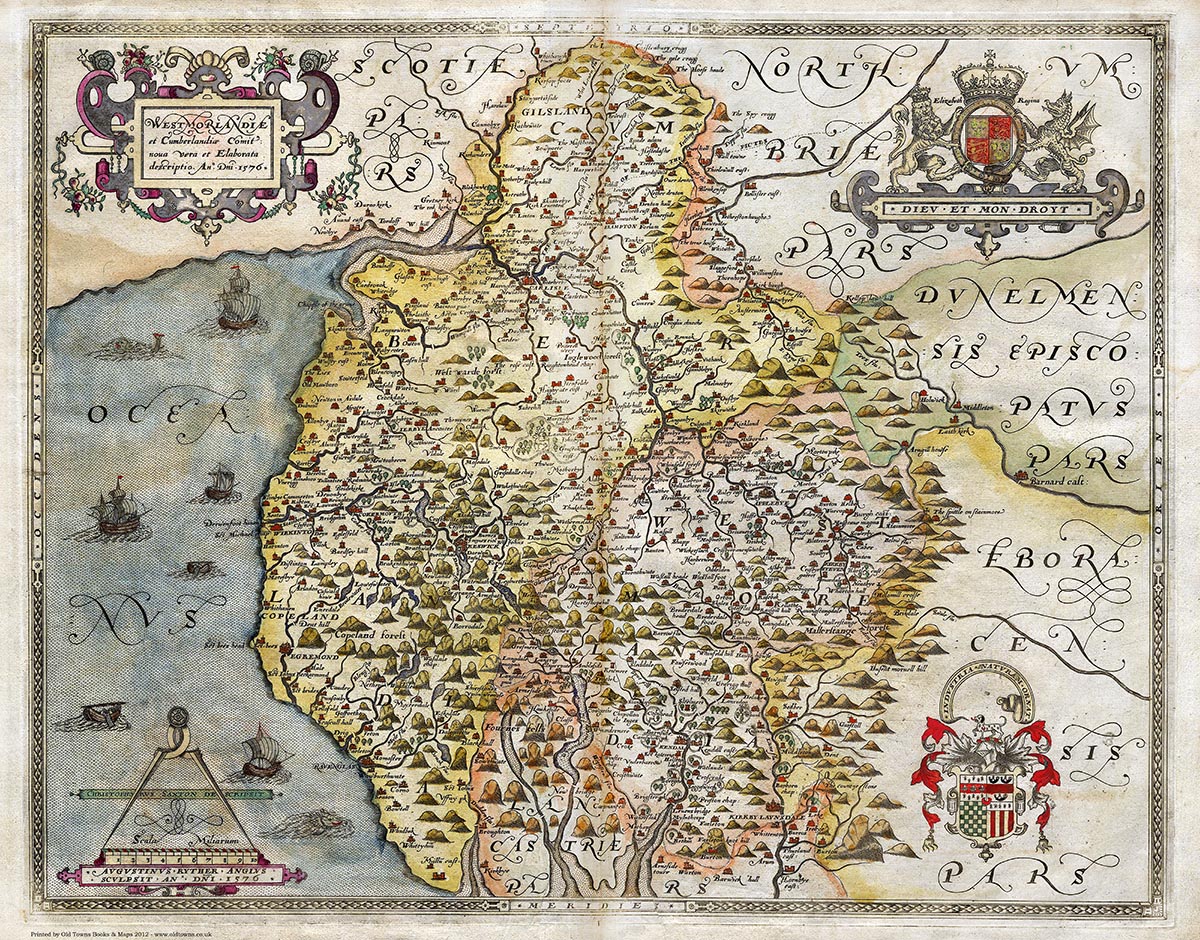
c.1585 Mr.Page headmaster of Penrith Grammar School meets a stranger, a visiting gentleman, who had arrived in Penrith to visit some of its antiquities. The stranger produced a sheet of paper and said that Sir Owen (Hugh) Caesarius had a hermitage somewhere thereabouts called 'Sir Hugh's parlour' and this place was some time afterwards opened by a William Turner who there found 'the great long shank bones of a man and a broad sword'.
Was this the Giants grave? Or some other location associated with Owen Caesarius such as the caves on the River Eden?

1595 Penrith appears on map of this date spelled as Penrathe

From approximately 22nd September 1597 to 13th December 1598 the Black Death haemorrhagic plague (spread by humans), not bubonic plague (spread by rats) devastated Penrith killing around 2,260 people (Believed Penrith population was only between 1500-2000 at this time, so some of the quoted number must include deaths from neighbouring villages).
The plague had started slowly in September 1597, but with the warm weather in May 1598 it spread totally out of control, the outbreak ending around 13th December 1598. Another source suggests plague at Penreth (note spelling) earlier in 1554. The image below shows the location where the 1598 AD victims were buried.
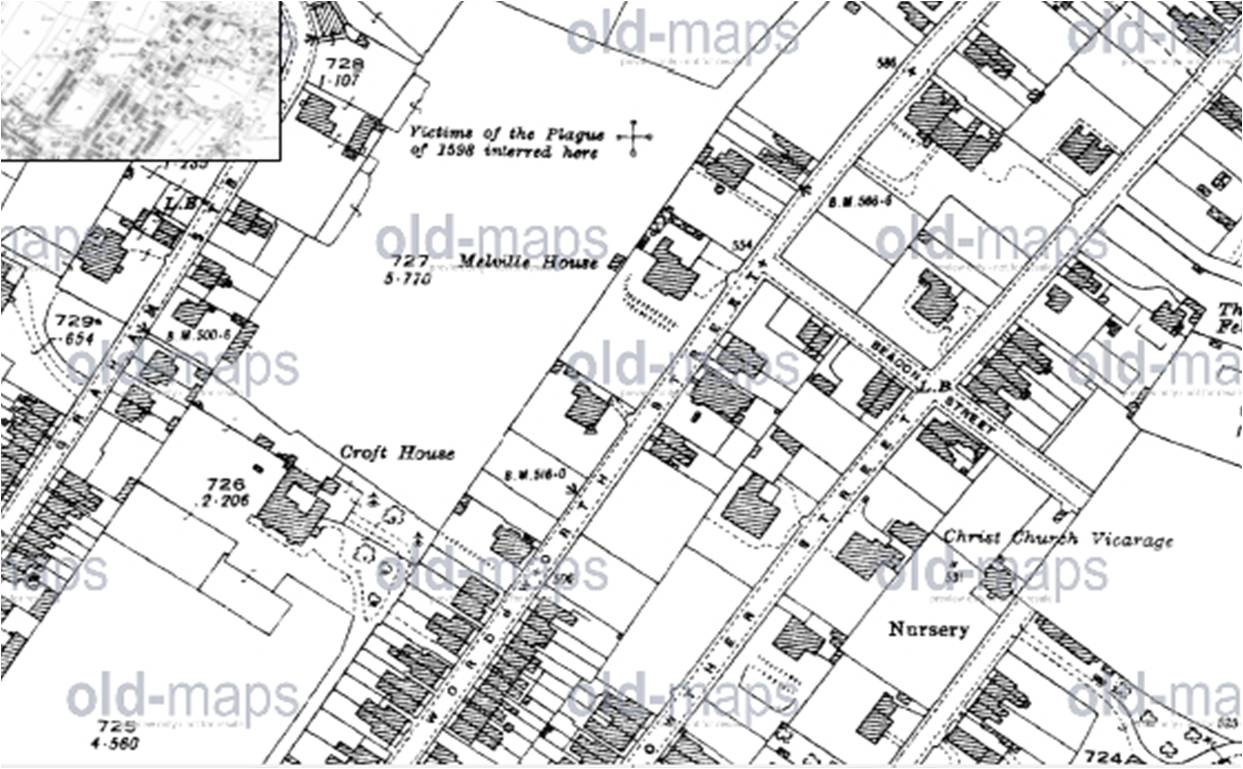
1600 Brougham Hall's Pele Tower is refurbished. Picture below taken in 2013 shows later extension to building and famous door knocker.
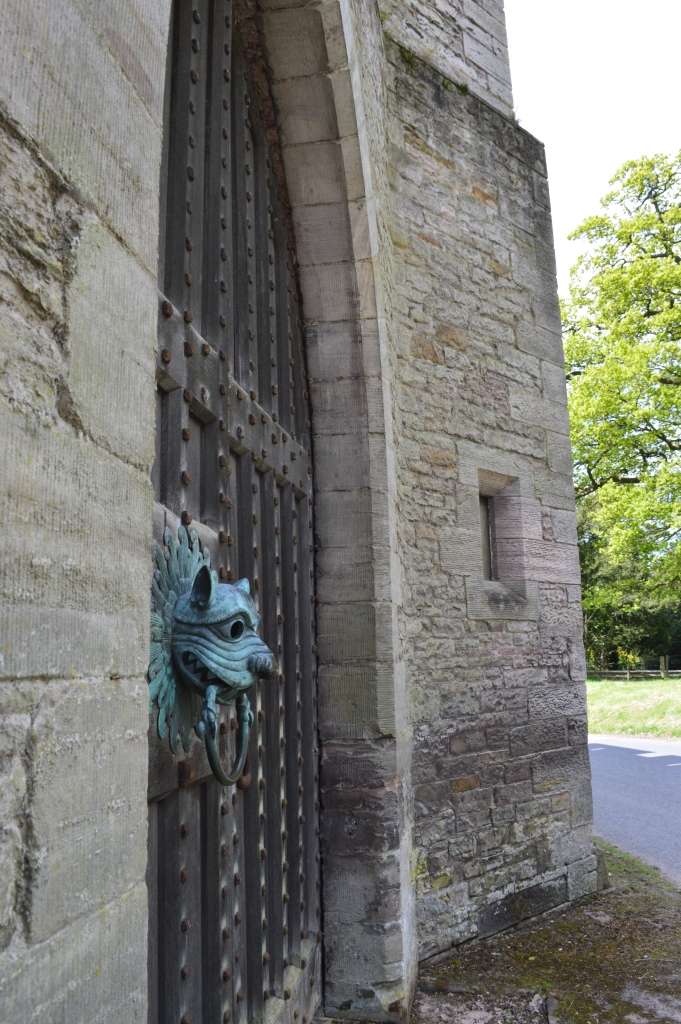
1601 April 3rd Penrith Town dyke re-established as a defence against the Scots and Border raiders.
1603 Final Scottish raid as far as Penrith before union of Scotland and England, by 200-300 raiders.
1622 Record poor harvest for Penrith and surrounding areas. [Was this caused by the Little Ice Age? The River Thames at London had frozen in 1621.]
1623 Famine apparently struck Penrith with high Wheat prices and low sheep prices. There was a significant spike in burials at this time estimated to be around 20% of the population.

1642 The English Civil War begins. Cumberland and Westmoreland staunchly Royalist.
1644/45 Siege of Carlisle Castle
1646 Old maps and records show that the town name of PENRITH used to have a different spelling. Prior to 1646 it was spelled as PENRETH, however locals continued after 1646 to use both spellings until the 1800's where the name PENRITH has been used exclusively. (See Saxton's map of Westmoreland and Cumberland dated 1576)
1648 Penrith Castle ruins briefly used during the English Civil War in June 1648, as the headquarters for the parliamentarian general John Lambert.
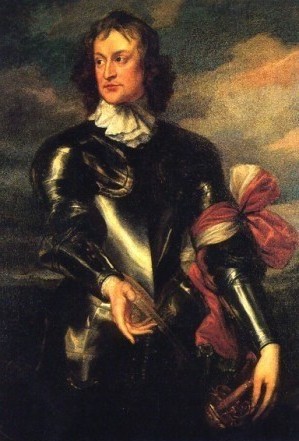
Penrith Castle was 'Slighted' or destroyed on the orders of Oliver Cromwell (like so many other castles throughout England), in order to prevent any future use by enemies.
June 1648 Greystoke castle captured by Parliamentary forces who had fired at it from a cannon battery on rising ground behind, referred to for many years as 'Cromwell Holes'. The castle was then set on fire and later rebuilt.
1651 English Civil War ends.
1668 Penrith's population had still not recovered from the plague or famine, being recorded at only 1356 persons.

1675 Map strip showing Penrith. Of note is that the road is clearly shown passing to the East of St.Andrew's Church and the Giant's Grave landmark, with a very marked dog's leg bend following a long curved street with houses either side.
Comparing this map to a modern day street map of Penrith and applying a little local knowledge, I believe the curved road to be Friargate off the A6 (or even as the name suggests Old London Road) and the straight road to be Benson Row leading to Drover's Lane. The Hutton family of Hutton Hall (built late 1300's) at this junction had built a water trough for passing horses, which I believe was the main route through the town in 1675 until more recent times, when the A6 became the primary North/South route. If however the 1675 map is inaccurate then the route could be the more logical Castlegate to Middlegate perhaps, with St. Andrew's church shown on the wrong side, but the bend isn't the correct shape.
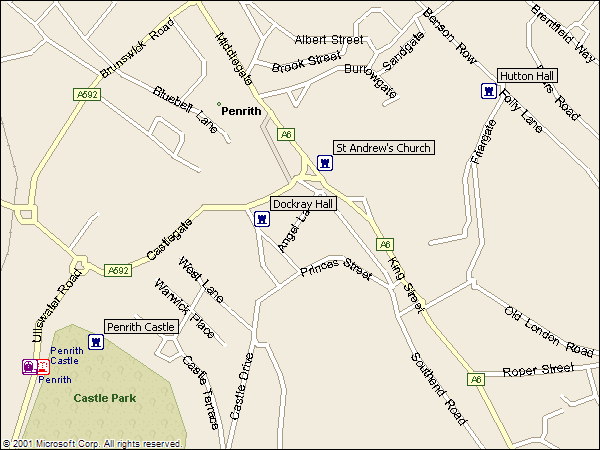
1705 Thomas Nelson from Penrith emigrated to Virginia and his son, Thomas, was one of the first signatories of the American Declaration of Independence.
1715 a massed Cumberland & Westmorland militia (armed mostly with only pitchforks) of between 4,000-14,000 men assembled on the barren slopes of Penrith Fell only to run off at the sight of an approaching Scottish Jacobite Army. Many were taken prisoner, but later released unharmed.
1719 the present stone Penrith Beacon tower was built, on Penrith Hill overlooking the town on the site previously used for other signal fires to warn of earlier invaders. A beacon is denoted on maps for this hill, as far back as the 1500's. First use as a beacon location recorded as 1296 AD.
![]()
c.1739 At Penrith Castle 'Bishop Strickland's tower' fell down.

1745
Bonnie Prince Charlie and his Jacobite Army
marched South from
18th Decmber 1745 Jacobite Army in retreat North have small battle at Clifton, near Penrith. Last battle on English soil.
19th December 1745 the Duke of Cumberland entered Penrith with his English forces.
1746 About half a mile north of Penrith is a square mount, measuring twenty yards on each side, which is generally supposed to have been used, after the rebellion, as a place of execution for the Scotch rebels captured at Carlisle Castle and convicted of High Treason. 7 were Hung, drawn and quartered. [The precise location of this execution site is not now known]
Executed on Tuesday 21st or 28th October 1746 at Penrith
James Harvey
Robert Lyon
David Home
John Rowbotham
Valentine Holt
Andrew Swan
Philip Hunt
The full sentence passed upon those convicted of High Treason was as follows : “That you be drawn on a hurdle to the place of execution where you shall be hanged by the neck and being (still) alive cut down, your privy members shall be cut off and your bowels taken out and burned before you, your head severed from your body and your body divided into four quarters to be disposed of at the King’s pleasure.”

This section relates specifically to Penrith Castle and its deterioration as depicted in several drawings and paintings.
I am indebted to Emily Knox for kindly allowing me to use some of her marvellous 3-D Project imagery showing Penrith castle as it would have looked originally in around 1470 A.D. I have followed Emily's project work for some time and the level of attention to detail is stunning. 'Time Team' and 'English Heritage' I hope you notice Emily's talent!

Castle plan above - Courtesy of English Heritage
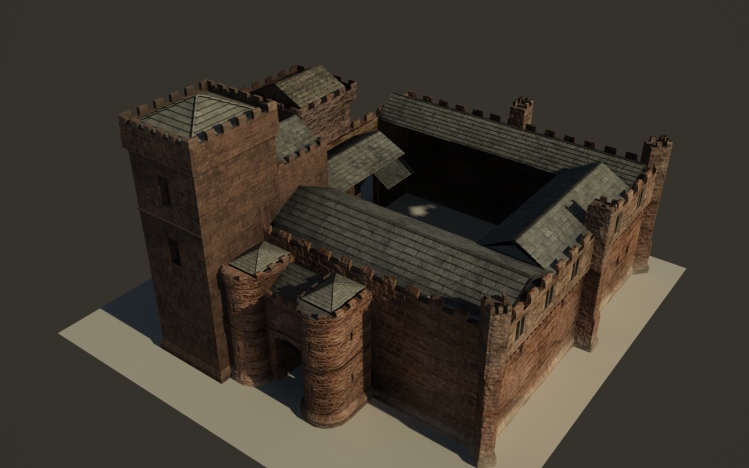
3-D image of Penrith Castle above, courtesy of Emily Knox
A 1760 drawing of the ruins of Penrith castle (West view?), below. Note the arched external doorway to the right of centre, is this a 'Sally Port'? I think the large gap is where Richard III new gatehouse stood. The other very prominent feature are the 3 large arched windows/recesses facing Penrith town, in what must have been the Great Hall. St.Andrews square church tower is visible in the town background, beneath Penrith Fell, (Beacon Hill).
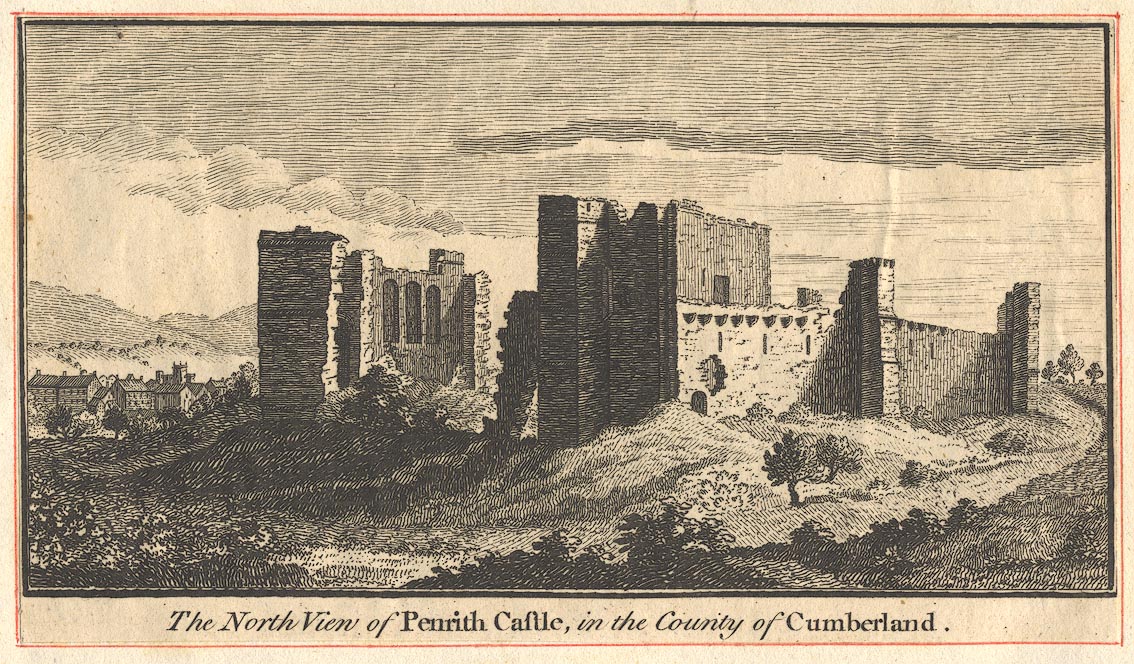
1775 drawings of Penrith castle (West view?) below, note the collapse of the large central feature, which I believe was built by Richard III.

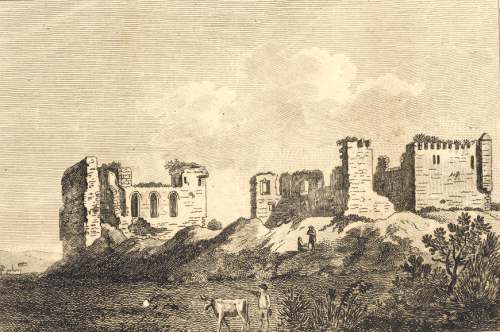
Penrith Castle 1806 drawing below, showing 3 large arched windows/recesses, I'm am not sure these are the same as in the above images? I can't see any daylight through any of arches in any drawing.

A 1821 painting of the ruins of Penrith castle (North view?), below. The 3 large arched windows are now fallen.
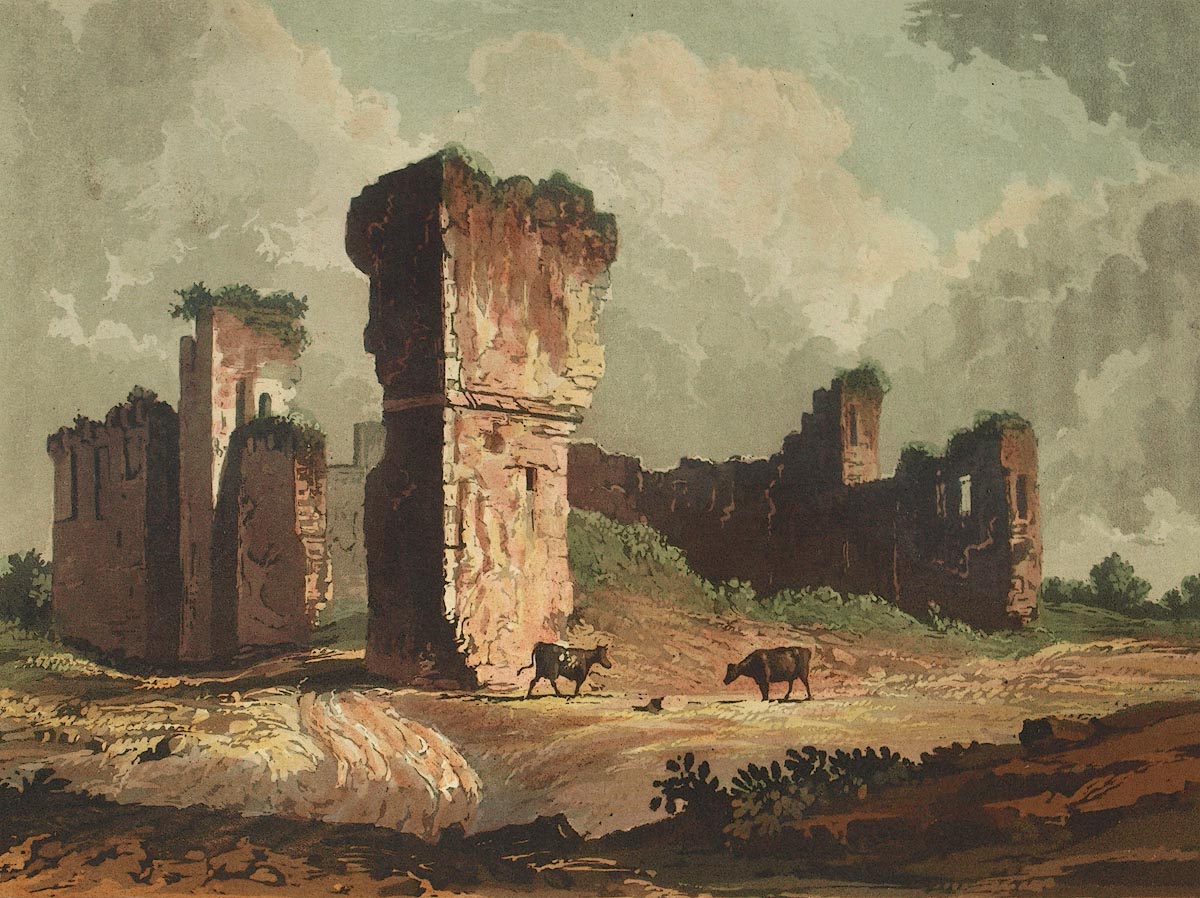
A 2010 photograph of Penrith castle (North view), below
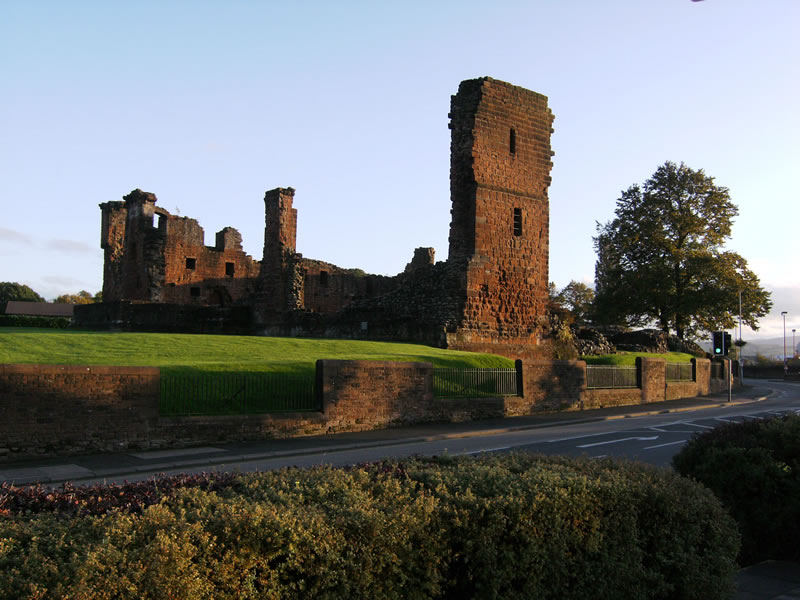

3-D image of Penrith Castle above, courtesy of Emily Knox
1807 Penrith town was much improved by the removal of the market-cross, shambles, and moot-hall. [Arnison's Drapers now stands on the Moot Hall site.]
1808 Trooper Levi Grisdale (a little known war hero from Penrith) of the British 10th Royal Hussars saw action in The Peninsular War, Spain and personally captured French General Charles Lefebvre-Desnouettes, commander in chief of all French Cavalry, whilst the French force were crossing the River Esla at Benevente, see picture below.
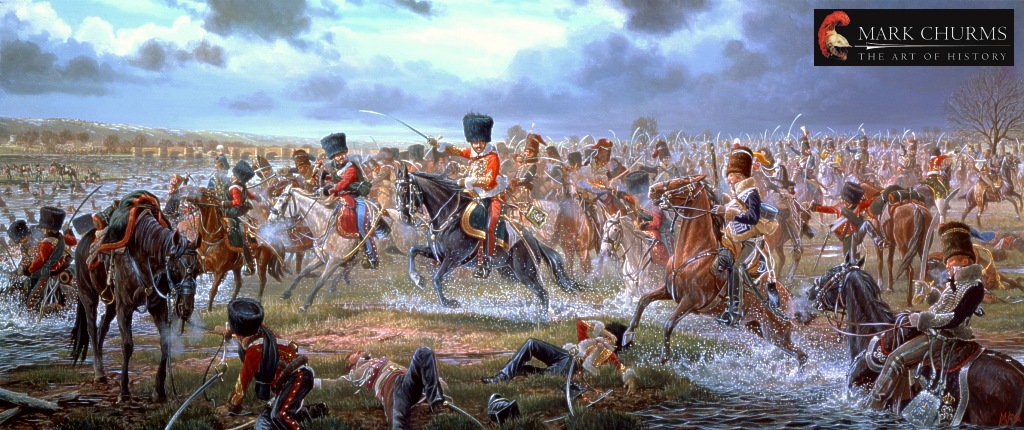
1815 Battle of Waterloo, apparently the promoted either Corporal or Sergeant Levi Grisdale was posted on the road the Prussian reinforcements would arrive on, and is credited with leading them onto the Waterloo battlefield resulting in the defeat of Emperor Napoleon's French Army.
Levi Grisdale survived the wars, as a Sergeant-Major and is now buried after his death in 1855 in Christ Church cemetery in Penrith. Apparently headstone shows him as Chelsea Pensioner, he was a pub landlord in Penrith at some time.]
1831 the population of Penrith recorded by the newly introduced census was 6,059
1832 the drawing below was made of the Giant's Grave, now within the boundary St.Andrew's churchyard where it is believed that Owen Caesarius, King of Cumbria between 900 and 937 AD was buried. An excavation around 1585 found long 'shank' bones and other bones and a Great 'broad' sword. The 4 hog back stones are Viking in style and it is likely that King Owen Caesarius had converted to Christianity.
[I am really puzzled by this grave, I cannot determine if it is genuine suggesting a Norse Royal burial due to the runic Viking carvings and Viking hog back stones, because I cannot yet find any written evidence of a Viking invasion in this area. Also the name Owen Caesarius sounds very Romano-British to me and not Viking. All historical records for this area seem to indicate a peaceful interaction between allied Norwegian Vikings from Dublin who settled here rather than an invasion associated with Danish Vikings. The area governed by 'Danelaw' was not established in Cumberland and the meeting of Kings at Eamont Bridge in 927 A.D. established England as we now know it]

1844 Penrith Castle ruins were purchased by the Lancaster & Carlisle Railway Company to build Penrith Railway Station.
1846 February. Penrith railway 'Navvy' riot. Irish and English rail construction workers attacked each other and the Cumberland and Westmorland Yeomanry had to intervene and it took a week to end.
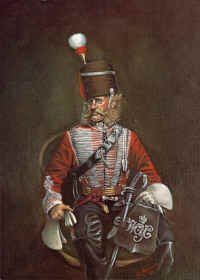
1846 Penrith, Cumberland was connected to the rail network. The image below from 1846 is at Newbiggin bridge between Penrith and Carlisle on the opening day of the railway line.

I think the steam engine in the 1846 drawing above is a Trevithick-Allan 2-2-2 'Dalemain' similar to Robert Stephenson's 'Planet locomotive', shown below. The horizontal rail, large diameter boiler, small front wheels and very large second wheels all appear the same, however the smoke stack in the drawing comes from the front of the boiler which it doesn't in the Planet picture below.
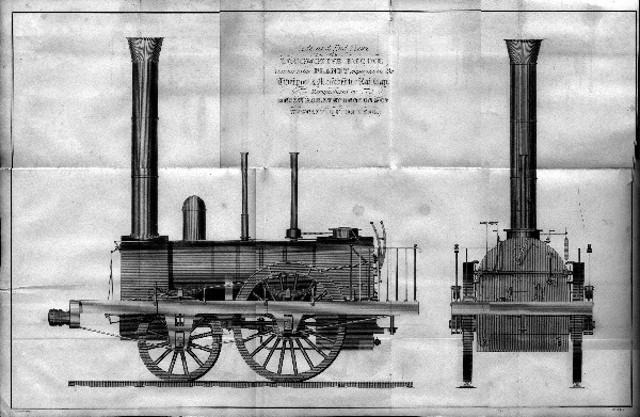
1854 Penrith has another war hero in the form of Trooper William Pearson who in 1854 survived the famous 'Charge of the Light Brigade' in the Crimea and who was cared for by Florence Nightingale.
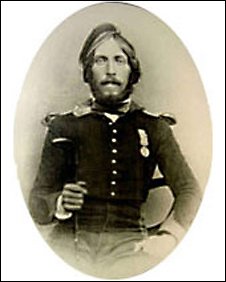
1858 The year of the "Great Comet" (Danati's) when Penrith and the Country were in fear of it striking.
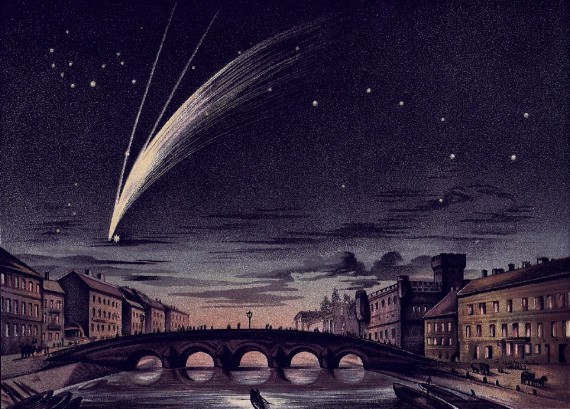
1861 Musgrave Memorial Clock tower erected in memory of the death of 26 year old son Philip Musgrave who died in Madrid in 1859
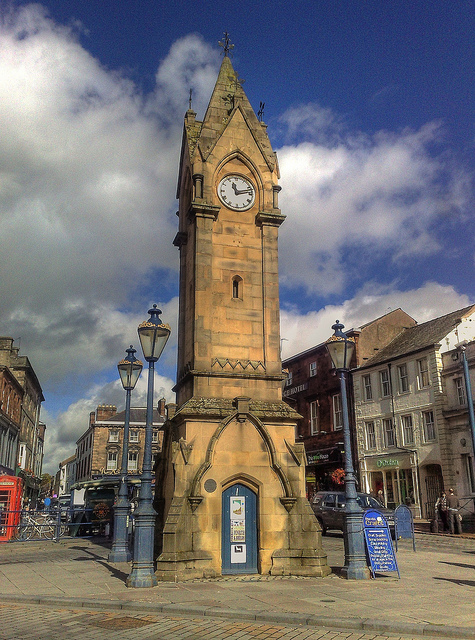
1867 ordnance survey map of Penrith there is a feature called 'The Arches', a subterranean (underground) passage, close to my home now.
[It appears on other later OS maps including the 1957 issue, but has disappeared by the 1968 issue the area featuring a new location called Anchor Farm. I can find no other references to it. If anyone has any further knowledge I would like to hear from you, as no trace exists today on the surface and the underground passages appear to be beneath a garden now in a more modern residential area called Macadam Way, Penrith!]
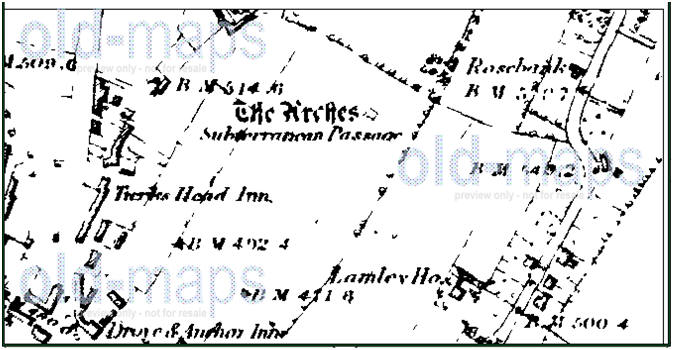
In the close-up image below taken from the OS 1864 Penrith town plan map 1:2500 scale the Arches are depicted in better detail. My interpretation is that the black line could signify above ground walls perhaps, with the dashed lines indicating what may be underground chambers? Alternatively do the black lines indicate the actual 'subterranean passage' in which case I am not sure what the dashed lines are, possibly building outlines?
The straight lines clearly indicate what must be a man-made construction. Could it have been some form of shelter perhaps from the Scottish raiders? No-one really knows. The Anchor Farm complex in the 1960's on this site was primarily for cattle, so I wonder if the Arches were filled in to prevent cattle incidents and all trace then lost before the residential estate was built on top in the 1980's?
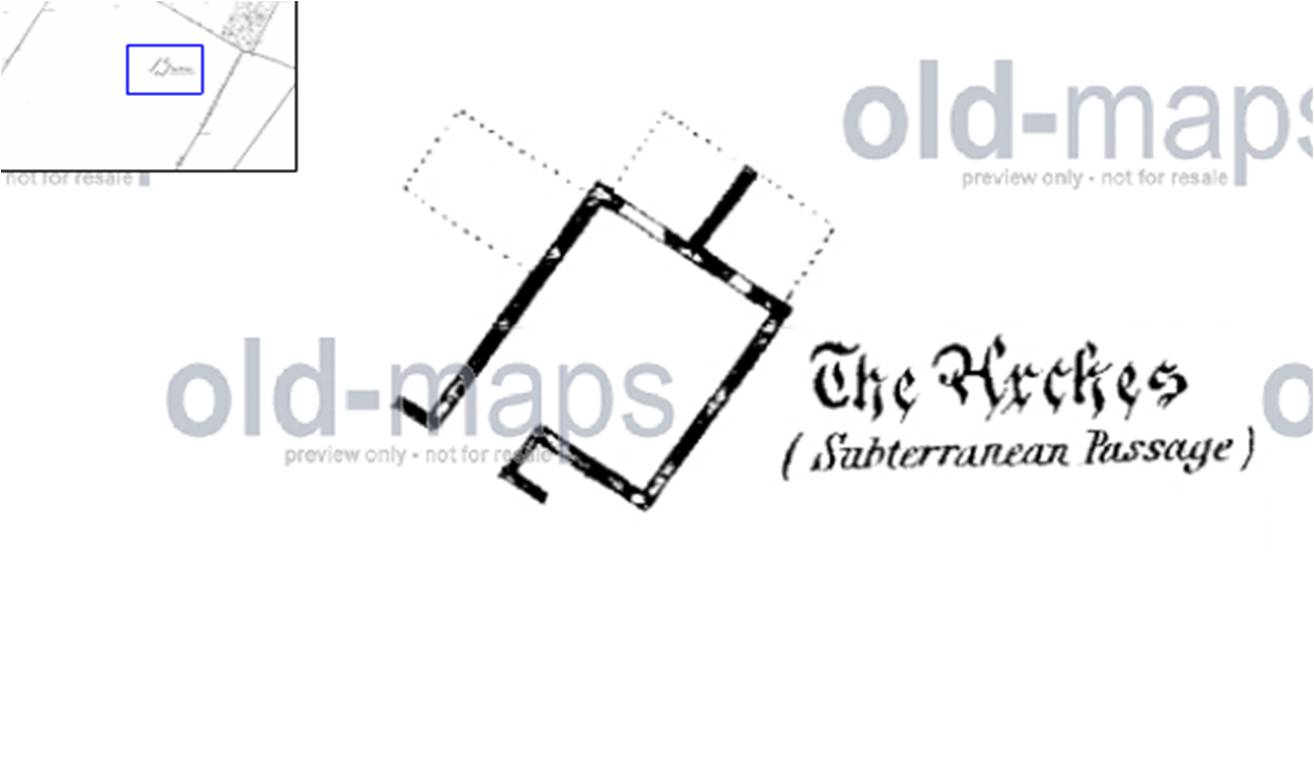
1871 Earth tremor shakes Penrith and the North of England (March 18th 1871, between 11-12 p.m.)
1907 Penrith population recorded as 9182 persons, with 57 licensed Public Houses!
1914 the Penrith Observer newspaper reported that the ruins of Penrith castle were strengthened that year with stone from Lazonby.
1918 The Fir trees on Penrith Beacon (formerly Penrith fell) are all cut down
1929 Replanting of Fir trees on Penrith Beacon

1942-1944, at the nearby Brougham Hall and Lowther Castle, the then 'Top Secret' Canal Defence Light (CDL) Tank project was conducted. My grandmother who lived on a farm at Troutbeck, near Penrith, recalled that during WW2 she saw mysterious lights on the hills near Penrith, which she believed were connected to these secret tanks.
[I have also found an original much older secret passage underground escape tunnel that exists running from Brougham Hall to the nearby woods. The secret passage exit I discovered in the 1990's was in the wooded hillside beneath the chapel (approximate path shown in the satellite image below as a bright green line) and upon entering I found myself within a very old brick lined vault (This makes me think the tunnel was built possibly during the English Civil War 1642-1651) with a suspended rope to climb up to the secret passageway, leading generally in the direction of the hall. A tunnel has been reported running under the West Terrace, which I believe may be the one I found.
There are possibly two secret passages as recent research by me has discovered, one entrance leads from Brougham Hall well and runs possibly within the North wall . It has been suggested this tunnel leads from Brougham Hall to the chapel on the other side of the road (approximate path shown in the satellite image below as a red line).
I have been verbally told in 2012 that within the past couple of years a lorry carrying cattle driving past Brougham Hall, collapsed the roof of a secret tunnel built under the road, resulting in two lorry loads of cement having to be poured into the secret tunnel before the Highway Agency would repair the road. I don't yet know which of the tunnels was affected.]
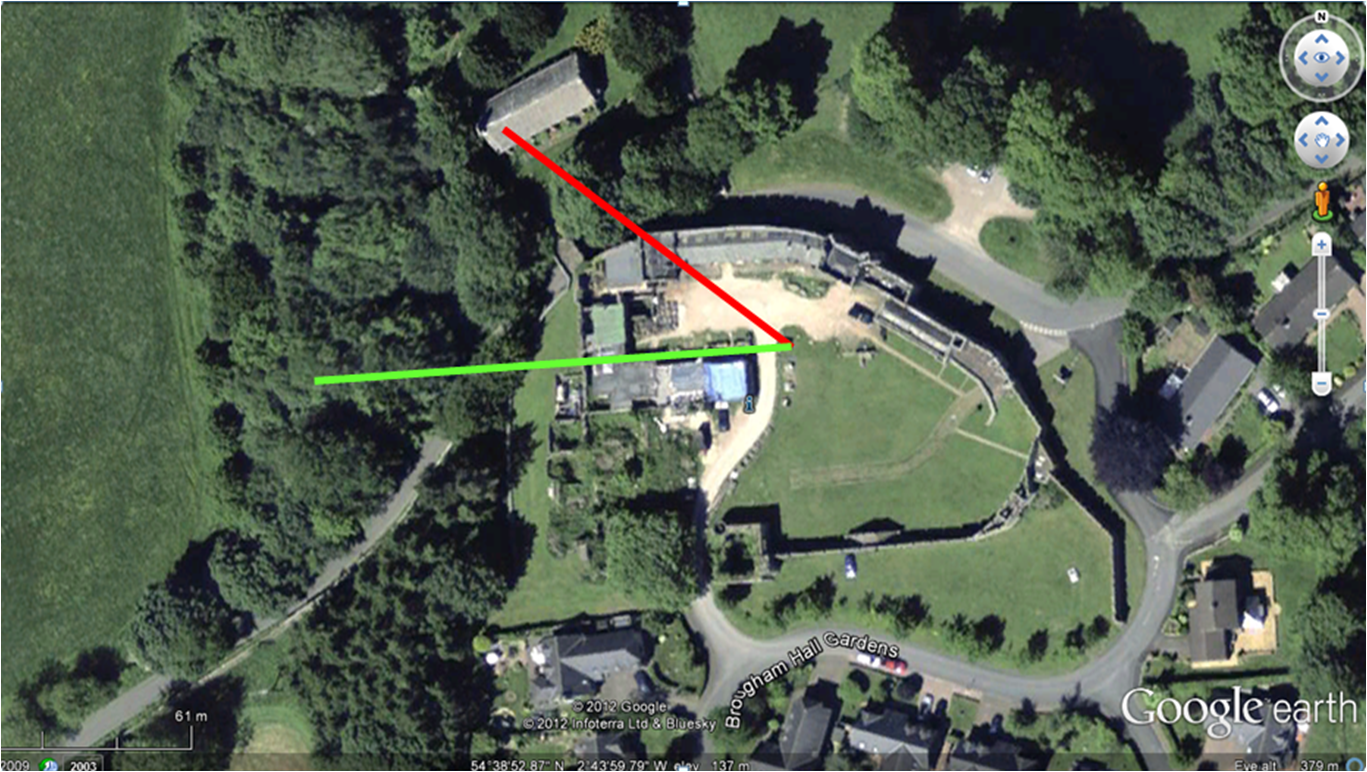
1973 on the 3rd June 1973 there was an earthquake here in Penrith that measured 3.9 on the Richter scale and on the 15th July another earthquake here that measured 4.9 on the Richter scale.
2001 Penrith population recorded as 14,756
2010 Crosby Garrett Roman Ceremonial Cavalry Helmet found near Penrith, sold at Auction to a private buyer for £2.3 Million Pounds. Dated to between 1st to 3rd Century.
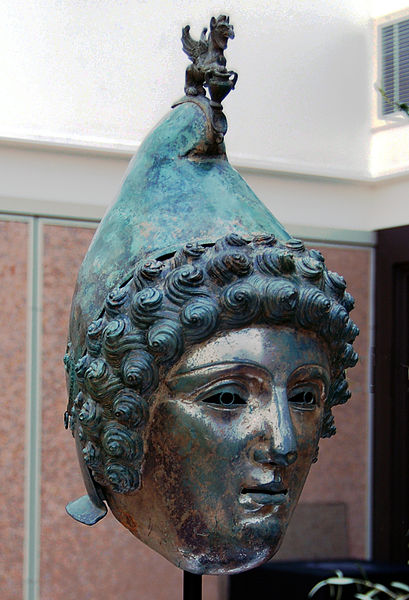

On the 21st December 2010 at 2300utc there was another minor earthquake here at Penrith. This one measured 3.5 on the Richter scale (the equivalent of 2.67 metric tonnes of TNT detonating underground!) and shook my entire house for 10-20 seconds. Below is a screen grab from the Keswick seismic sensor 15 miles away showing the line chart making lots of movement in Red ink.
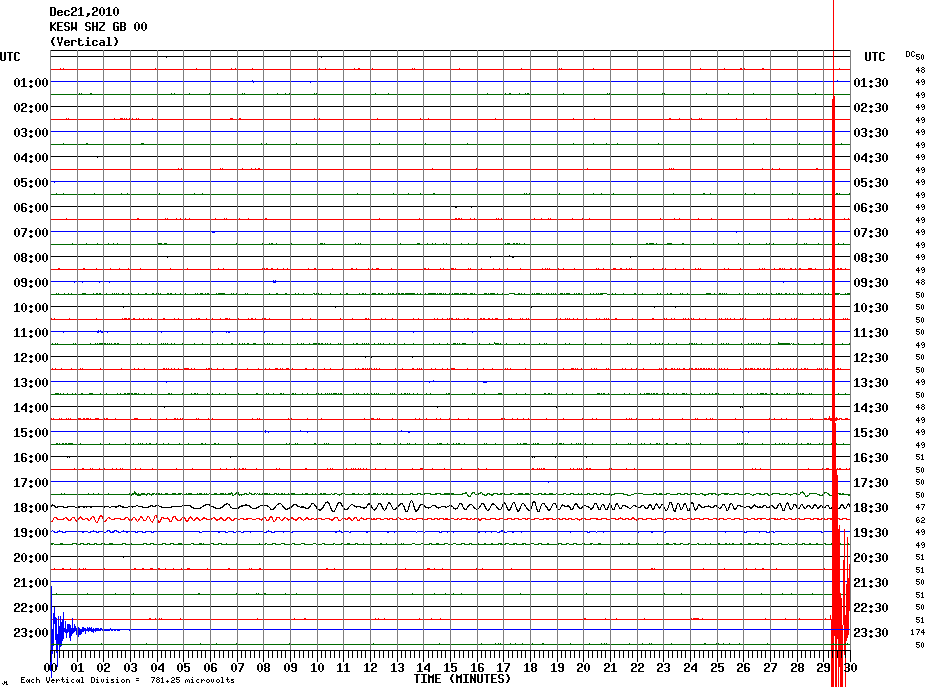
On the 3rd January 2011 at 2100utc another minor earthquake was felt here at Penrith, not as strong as in December, but the epicentre was further away at Ripon in North Yorkshire where it was 3.6 on the Richter scale.
2011 Penrith Alhambra cinema saved from closure and prevented from being sold to a national pub chain, due to large public support to retain it. 10 year lease extension granted to cinema operator.
2012 Penrith has a population of over 15,000+ and continues to be a mostly peaceful and pleasant place to live. The town has large amounts of new housing built in the past ten years in the Carleton area and the town centre is undergoing regeneration with the Penrith New Squares development.
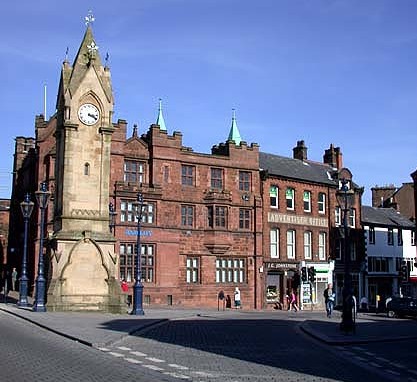
2012, sadly on the evening of 18th March 2012 the Penrith Castle Park wooden sports pavilion was completely destroyed by fire, caused by a suspected arson attack. It was nearly 100 years old.
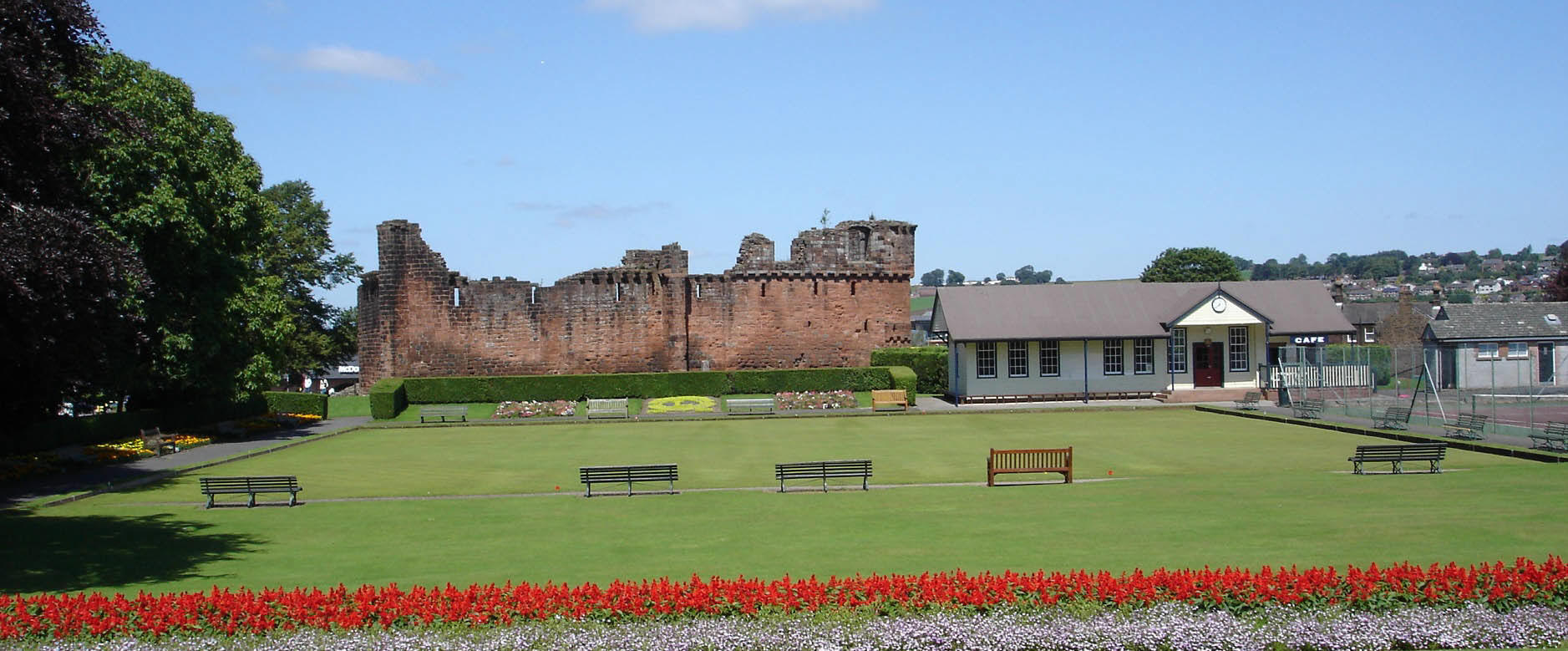
August 2012 I'm interested in trying to record the modern history of Penrith, through photographs. Since 1990 I have already seen many Penrith shops, businesses and houses change or be demolished with no photographic online record that I can find. I'm thinking of starting by recording some of the house details in the Penrith 'New Streets' Conservation Area. This is an area of Penrith mostly built in Victorian times prior to 1895, the exception being Wordsworth street, which appears on 1900 maps but is not shown before then.
There are lots of lakes and mountains which are popular with tourists. Below are some links for the National Park and the area in which I live, also shown are links to sites within easy travelling distance of here.
|
Tourist
links for Penrith, Cumbria and the North of England |
|||
|
|
|||
|
|
|||
|
|
|
|
|
|
|
|||
|
|
|||
|
|
|
|
|
|
|
|||
|
|
|
||
|
Brockhole Lake District Visitor Centre
|
|||
|
|
|||
|
Lakeside & Haverthwaite steam railway
|
|||
|
|
|
||
|
|
|
|
|
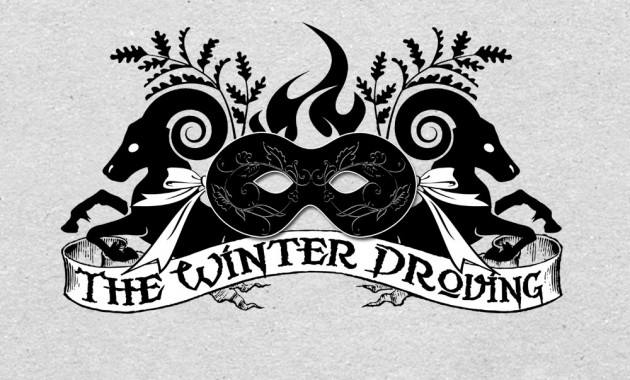
New in 2012 for Penrith was the annual 'Winter Droving' festival held on Saturday 24th November 2012, from 18:00-21:00, featuring fire, masks, music, food & mayhem
Full details from Eden Arts website click here
This Weather Widget is provided by the Met Office
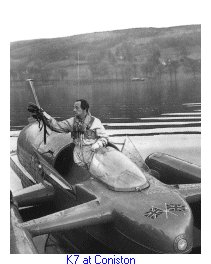
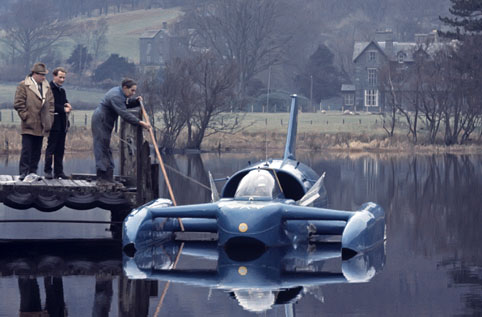
I was born towards the end of 1962, one of my very earliest memories (aged 4) is of visiting the legendary Donald Campbell (The only person ever to hold simultaneously the World Land and Water Speed Records) and his Bluebird K7 jet powered boat (shown above) at Coniston Water, just before his fateful crash in January 1967 where he attained a speed of 300 MPH.
Across the Lake - Bluebird K7 - Donald Campbell
|
|
|
||
|
|
Send formatted VHF DX Cluster spot |
|
|
|
If you cannot see the full index shown on the left edge of your screen, please go to my main page at © Copyright G0ISW. Page last modified 14th June 2020. All Rights Reserved. |
|||
References/Sources
Allison's picturesque pocket companion: comprising a sketch of Penrith and it's neighbourhood
Ad Gefrin: Yeavering Bell Hill Fort http://www.pastperfect.org.uk/sites/yeavering/archive/sources/forgetting-gefrin.pdf
Calin's Chronicle http://caelinschronicle.com/annals_581-642.html
The histories and antiquities of Leath Ward: in the county of Cumberland by Samuel Jefferson, 1840
English Heritage archaeological assessment report for Penrith http://ads.ahds.ac.uk/catalogue/adsdata/arch-319-1/dissemination/pdf/Eden/Assessment/Penrith_assessment_report.pdf
The Men of the North: The Britons od Southern Scotland (Clarkson, Tim)
Bygone Cumberland & Westmorland http://freepages.rootsweb.ancestry.com/~wakefield/history/37891-h/37891-h.htm
Levi Grisdale http://grisdalefamily.wordpress.com/2012/03/18/208/